 Search by Keyword
|
“YELLOW SUBMARINE”
(John Lennon – Paul McCartney)
 Supplying a song for Ringo to sing on every Beatles album was not ever much of a priority. Sometimes a cover song was chosen for him, sometimes he himself chose a cover song to perform, and sometimes a song was written especially for him by John and/or Paul. When the third option was chosen, the composition was admittedly never of the same caliber as one they would sing themselves and definitely not one that would be intended for release as a single. The time spent in the recording studio working on the song would always be minimal as well. The resulting "Ringo track" would be buried somewhere on the album to satisfy the demands of fans who desired to hear their favorite Beatle at the microphone. Supplying a song for Ringo to sing on every Beatles album was not ever much of a priority. Sometimes a cover song was chosen for him, sometimes he himself chose a cover song to perform, and sometimes a song was written especially for him by John and/or Paul. When the third option was chosen, the composition was admittedly never of the same caliber as one they would sing themselves and definitely not one that would be intended for release as a single. The time spent in the recording studio working on the song would always be minimal as well. The resulting "Ringo track" would be buried somewhere on the album to satisfy the demands of fans who desired to hear their favorite Beatle at the microphone.
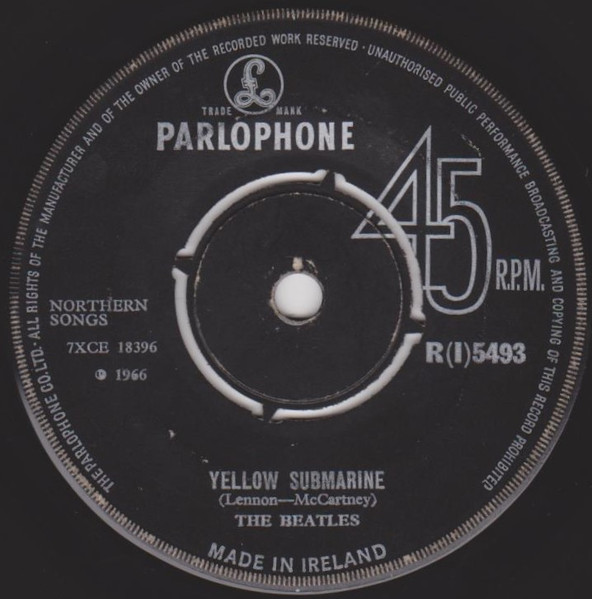 Who would ever have thought that the “Lennon / McCartney” songwriting team would compose a song for Ringo to sing that was deemed good enough to actually be released as a single? In fact, enthusiasm was high (quite possibly in the chemical sense as well) while it was being recorded, much time being spent in getting it just right. They even enlisted friends and loved ones to help in the recording process. The result became the one and only British Beatles single to feature Ringo as lead vocalist, a track that the singer would forever be linked with as his ultimate "claim to fame." And with the song eventually becoming the title track of their highly successful animated motion picture, “Yellow Submarine” will probably always be known as the singer’s most noteworthy accomplishment. Who would ever have thought that the “Lennon / McCartney” songwriting team would compose a song for Ringo to sing that was deemed good enough to actually be released as a single? In fact, enthusiasm was high (quite possibly in the chemical sense as well) while it was being recorded, much time being spent in getting it just right. They even enlisted friends and loved ones to help in the recording process. The result became the one and only British Beatles single to feature Ringo as lead vocalist, a track that the singer would forever be linked with as his ultimate "claim to fame." And with the song eventually becoming the title track of their highly successful animated motion picture, “Yellow Submarine” will probably always be known as the singer’s most noteworthy accomplishment.
 57 Wimpole Street, London, the Asher home where Paul wrote much of "Yellow Submarine"
|
Songwriting History
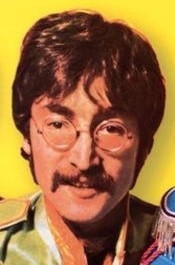 The earliest Beatles interview regarding the authorship of "Yellow Submarine" was on March 20th, 1967 during a recorded interview with Brian Matthew at EMI Studios. Since The Beatles were to be receiving an Ivor Novello award for the song three days later and they were not available to be there in person to receive it, Brian Matthew addressed John Lennon, saying: "Earlier before we started recording, you said it was in effect written as two separate songs." John confirmed, "Yeah, I seem to remember, like, the submarine...the chorus bit, you coming in with it," to which Paul agreed "yeah." John then asked Paul, "And wasn't the other bit something that I had already going, and we put them together?" Paul answered, "Well, yeah. Right. Yeah." Lennon then added, "And it made sense to make it into...with Ringo in mind." The earliest Beatles interview regarding the authorship of "Yellow Submarine" was on March 20th, 1967 during a recorded interview with Brian Matthew at EMI Studios. Since The Beatles were to be receiving an Ivor Novello award for the song three days later and they were not available to be there in person to receive it, Brian Matthew addressed John Lennon, saying: "Earlier before we started recording, you said it was in effect written as two separate songs." John confirmed, "Yeah, I seem to remember, like, the submarine...the chorus bit, you coming in with it," to which Paul agreed "yeah." John then asked Paul, "And wasn't the other bit something that I had already going, and we put them together?" Paul answered, "Well, yeah. Right. Yeah." Lennon then added, "And it made sense to make it into...with Ringo in mind."
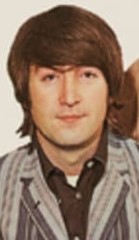 There exists an early demo by John Lennon made approximately in March of 1966 that contains the familiar verse melody and chords but played in 3/4 time, this including the lyrics, "In the town where I was born / no one cared, no one cared." This appears to be the beginnings of what became the song "Yellow Submarine." There exists an early demo by John Lennon made approximately in March of 1966 that contains the familiar verse melody and chords but played in 3/4 time, this including the lyrics, "In the town where I was born / no one cared, no one cared." This appears to be the beginnings of what became the song "Yellow Submarine."
 The catchy chorus of the song appears to have been written by Paul, as he explains in his 1997 book "Many Years From Now." "I was laying in bed in the Ashers’ garret, and there’s a nice twilight zone just as you’re drifting into sleep and as you wake from it; I always find it quite a comfortable zone, you’re almost asleep, you’ve laid your burdens down for the day and there’s this little limbo-land just before you slip into sleep. I remember thinking that a children’s song would be quite a good idea and I thought of images, and the color yellow came to me, and a submarine came to me, and I thought, ‘Well, that’s kind of nice, like a toy, very childish yellow submarine.’" The catchy chorus of the song appears to have been written by Paul, as he explains in his 1997 book "Many Years From Now." "I was laying in bed in the Ashers’ garret, and there’s a nice twilight zone just as you’re drifting into sleep and as you wake from it; I always find it quite a comfortable zone, you’re almost asleep, you’ve laid your burdens down for the day and there’s this little limbo-land just before you slip into sleep. I remember thinking that a children’s song would be quite a good idea and I thought of images, and the color yellow came to me, and a submarine came to me, and I thought, ‘Well, that’s kind of nice, like a toy, very childish yellow submarine.’"
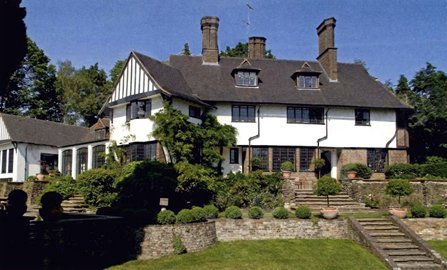 Shortly thereafter, most likely during a songwriting session at "Kenwood," Lennon's home in Weybridge, John and Paul recorded yet another demo where they merged John's verse idea with Paul's chorus idea. Altering the song into a 4/4 time signature, John played acoustic guitar and sang the verses, reading (and sometimes mis-reading) the lyrics from a lyric sheet that they undoubtedly worked on together, Paul insisting that John be the vocalist, explaining "you know how to sing it." Before John begins one of his run-throughs, John complains that he can't see the lyric sheet from where he was sitting, prompting Paul to bring it closer and then ask his near-sighted partner, "can you read that?", to which he replies, "yeah, I can read it okay now, Paul. Right, you can play on your track and I'll play on mine." Shortly thereafter, most likely during a songwriting session at "Kenwood," Lennon's home in Weybridge, John and Paul recorded yet another demo where they merged John's verse idea with Paul's chorus idea. Altering the song into a 4/4 time signature, John played acoustic guitar and sang the verses, reading (and sometimes mis-reading) the lyrics from a lyric sheet that they undoubtedly worked on together, Paul insisting that John be the vocalist, explaining "you know how to sing it." Before John begins one of his run-throughs, John complains that he can't see the lyric sheet from where he was sitting, prompting Paul to bring it closer and then ask his near-sighted partner, "can you read that?", to which he replies, "yeah, I can read it okay now, Paul. Right, you can play on your track and I'll play on mine."
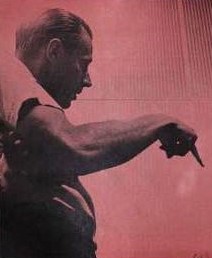 After mistakenly beginning the song in 3/4 as he had done in his previous demo, Lennon changes to 4/4 as they had previously decided and, with Paul accompanying him on acoustic guitar, make it through a couple renditions of the song. Only the opening verse was composed at this point (John mistakenly singing "sailed into the sea" instead of "sun" at one point), this verse probably being co-written that day. Paul would sing in unison with John during the choruses, the phrases "Look out!" and "Get down!" being included each time. Interestingly, when they start acting silly in between renditions, Paul imitates George Martin by saying, "Now, come on, chaps. Cut it out. We gotta get a song done!" After another version was complete, which they pretended to fade down as a record would conclude, John exclaimed, "All right, 'Take one,' Jack, take it over now!" After mistakenly beginning the song in 3/4 as he had done in his previous demo, Lennon changes to 4/4 as they had previously decided and, with Paul accompanying him on acoustic guitar, make it through a couple renditions of the song. Only the opening verse was composed at this point (John mistakenly singing "sailed into the sea" instead of "sun" at one point), this verse probably being co-written that day. Paul would sing in unison with John during the choruses, the phrases "Look out!" and "Get down!" being included each time. Interestingly, when they start acting silly in between renditions, Paul imitates George Martin by saying, "Now, come on, chaps. Cut it out. We gotta get a song done!" After another version was complete, which they pretended to fade down as a record would conclude, John exclaimed, "All right, 'Take one,' Jack, take it over now!"
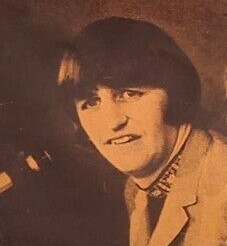 In the 1997 biography "Many Years From Now," Paul explains how he contrived a story for the verses of the song. "I was thinking of it as a song for Ringo, which it eventually turned out to be, so I wrote it as not too rangey in the vocal. I just made up a little tune in my head, then started making a story, sort of an ancient mariner, telling the young kids where he had lived and how there had been a place where he had a yellow submarine...I quite like children’s things; I quite like children’s minds and imagination. So it didn’t seem uncool to me to have a pretty surreal idea that was also a children’s idea. I thought also, with Ringo being so good with children – a knockabout uncle type – it might not be a bad idea for him to have a children’s song, rather than a very serious song. He wasn’t that keen on singing." In the Forward for the 2022 Deluxe edition of "Revolver," Paul elaborates: "One twilight evening, lying in bed before dozing off, I came up with a song that I thought would suit Ringo and at the same time incorporate the heady vibes of the time...a children's song with a touch of stoner influence, which Ringo still wows audiences with to this day." In the 1997 biography "Many Years From Now," Paul explains how he contrived a story for the verses of the song. "I was thinking of it as a song for Ringo, which it eventually turned out to be, so I wrote it as not too rangey in the vocal. I just made up a little tune in my head, then started making a story, sort of an ancient mariner, telling the young kids where he had lived and how there had been a place where he had a yellow submarine...I quite like children’s things; I quite like children’s minds and imagination. So it didn’t seem uncool to me to have a pretty surreal idea that was also a children’s idea. I thought also, with Ringo being so good with children – a knockabout uncle type – it might not be a bad idea for him to have a children’s song, rather than a very serious song. He wasn’t that keen on singing." In the Forward for the 2022 Deluxe edition of "Revolver," Paul elaborates: "One twilight evening, lying in bed before dozing off, I came up with a song that I thought would suit Ringo and at the same time incorporate the heady vibes of the time...a children's song with a touch of stoner influence, which Ringo still wows audiences with to this day."
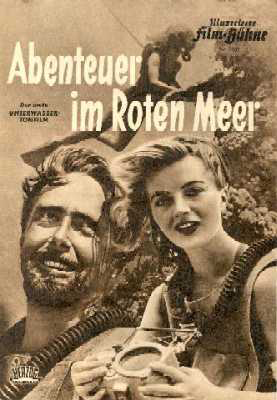 In his 2021 book "The Lyrics," Paul delves deeper into the overall inspriation for the song. "All those ballads. 'Sir Patrick Spens' (and) 'The Rime Of The Ancient Mariner.' All that stuff about a man going to sea. Not to mention Lewis Carroll...The nonsense tradition was part of my sixth-form experience in English literature class with my teacher Alan Durband...I honestly can't overstate his influence on me. I hesitate to use such a hackneyed phrase, but (Alan Durband) was genuinely inspirational...Another factor that can't be overstated was the incredible popularity of television programs at the time that featured the underwater world. There were the Austrian underwater divers Hans and Lotte Hass. Lotte was a kind of pin-up. The series Sea Hunt, with Lloyd Bridges, was on the air at that time; and Flipper, the television show about a dolphin, ran between 1964 and 1967. That underwater world was quite magical. And I think somehow the sense of possibility it opened up coincided with our post-war experiences." In his 2021 book "The Lyrics," Paul delves deeper into the overall inspriation for the song. "All those ballads. 'Sir Patrick Spens' (and) 'The Rime Of The Ancient Mariner.' All that stuff about a man going to sea. Not to mention Lewis Carroll...The nonsense tradition was part of my sixth-form experience in English literature class with my teacher Alan Durband...I honestly can't overstate his influence on me. I hesitate to use such a hackneyed phrase, but (Alan Durband) was genuinely inspirational...Another factor that can't be overstated was the incredible popularity of television programs at the time that featured the underwater world. There were the Austrian underwater divers Hans and Lotte Hass. Lotte was a kind of pin-up. The series Sea Hunt, with Lloyd Bridges, was on the air at that time; and Flipper, the television show about a dolphin, ran between 1964 and 1967. That underwater world was quite magical. And I think somehow the sense of possibility it opened up coincided with our post-war experiences."
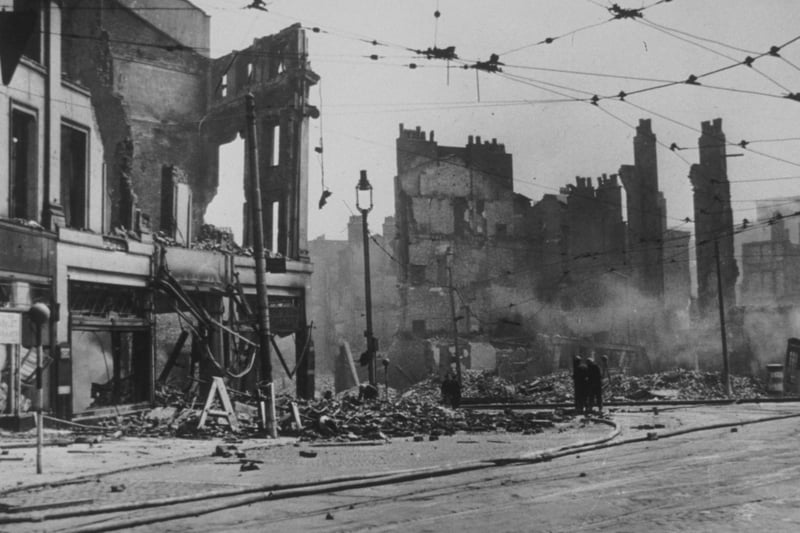 Also in his book "The Lyrics," Paul paints an even more detailed picture concerning the images contained in the composition. "A large part of the subtext of 'Yellow Submarine' was that, even then, The Beatles were living in our own capsule. Our own microclimate. Our own controlled environment...When we were kids in Liverpool - 'In the town where I was born' - it was all bombs and rationing and ruins. My dad was a fireman, so talk of incendiary bombs was an everyday thing. Our amusement was often homemade. The songs the old people sang were your entertainment. You learnt to make do with very little. So, when you got a bit more, it was like going from black and white to color. For The Beatles - though we didn't know it at the time - expressing our joy at coming out of the black-and-white world actually contributed to that new burst of color. It's hard to believe, but we played an active role in it. We helped to make the 'Sky of blue and sea of green' so vibrant." Also in his book "The Lyrics," Paul paints an even more detailed picture concerning the images contained in the composition. "A large part of the subtext of 'Yellow Submarine' was that, even then, The Beatles were living in our own capsule. Our own microclimate. Our own controlled environment...When we were kids in Liverpool - 'In the town where I was born' - it was all bombs and rationing and ruins. My dad was a fireman, so talk of incendiary bombs was an everyday thing. Our amusement was often homemade. The songs the old people sang were your entertainment. You learnt to make do with very little. So, when you got a bit more, it was like going from black and white to color. For The Beatles - though we didn't know it at the time - expressing our joy at coming out of the black-and-white world actually contributed to that new burst of color. It's hard to believe, but we played an active role in it. We helped to make the 'Sky of blue and sea of green' so vibrant."
As to who wrote what, Paul states: “It’s pretty much my song as I recall, written for Ringo in that little twilight moment. I think John helped out; the lyrics get more and more obscure as it goes on but the chorus, melody and verses are mine.”
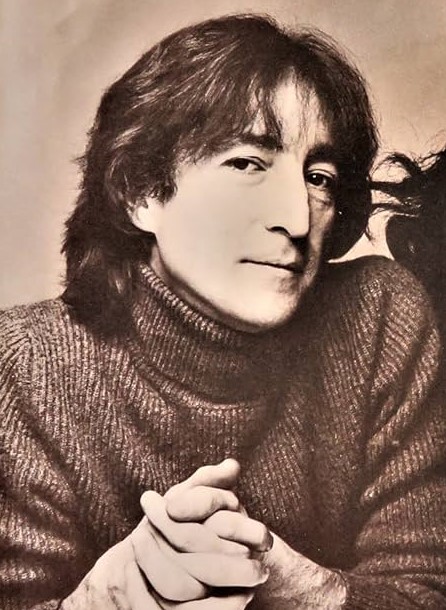 John concurs, stating in 1972: “Paul wrote the catchy chorus. I helped with the blunderbuss bit.” In 1980 he described the track as "Paul’s baby. Donovan helped with the lyrics. I helped with the lyrics too…Paul’s idea, Paul’s title – so I count it as a Paul song…written for Ringo." Although John's early demo that outlined the verse chords and melody, as described above, got the ball rolling for the composition, he eventually gave most of the credit to Paul, who came up with the catchy chorus and constructed the storyline in the verses with a bit of lyrical help from John and Donovan. John concurs, stating in 1972: “Paul wrote the catchy chorus. I helped with the blunderbuss bit.” In 1980 he described the track as "Paul’s baby. Donovan helped with the lyrics. I helped with the lyrics too…Paul’s idea, Paul’s title – so I count it as a Paul song…written for Ringo." Although John's early demo that outlined the verse chords and melody, as described above, got the ball rolling for the composition, he eventually gave most of the credit to Paul, who came up with the catchy chorus and constructed the storyline in the verses with a bit of lyrical help from John and Donovan.
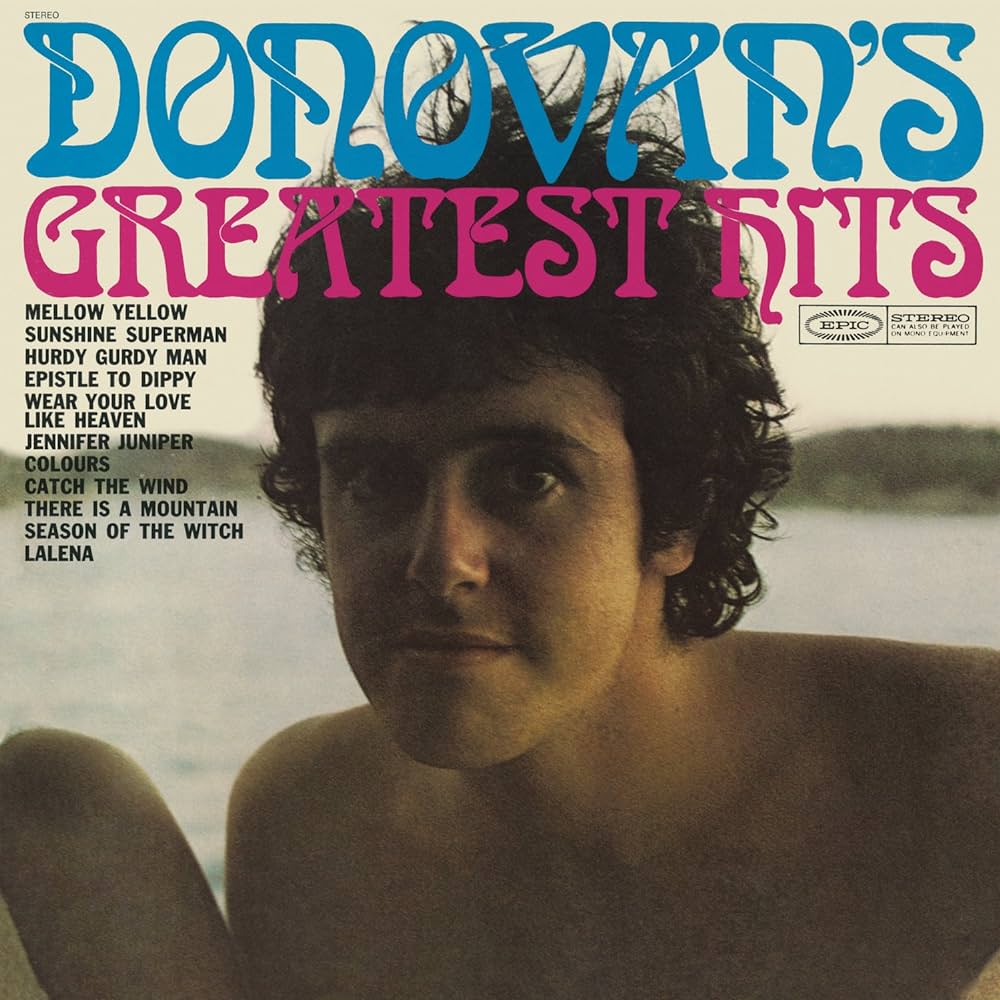 Good friend Donovan Leitch relates his input in the composition of the song. “I helped Paul with the lyrics for ‘Yellow Submarine.’ He came round to my apartment and parked his Aston Martin in the middle of the road with the doors open and the radio blaring. He walked away from the car and came up to my apartment and played me ‘Eleanor Rigby’ with different lyrics and he also said that he had another song that was missing a verse. It was a very small part and I just went into the other room and put together ‘sky of blue, sea of green.’ They had always asked other people for help with a line or two, so I helped with that line. He knew that I was into kids’ songs and he knew I could help. I’m sure he could have written the line himself but I suppose he wanted someone to add a line and I added a line…It was nothing really, but he liked it and it stayed in.” Good friend Donovan Leitch relates his input in the composition of the song. “I helped Paul with the lyrics for ‘Yellow Submarine.’ He came round to my apartment and parked his Aston Martin in the middle of the road with the doors open and the radio blaring. He walked away from the car and came up to my apartment and played me ‘Eleanor Rigby’ with different lyrics and he also said that he had another song that was missing a verse. It was a very small part and I just went into the other room and put together ‘sky of blue, sea of green.’ They had always asked other people for help with a line or two, so I helped with that line. He knew that I was into kids’ songs and he knew I could help. I’m sure he could have written the line himself but I suppose he wanted someone to add a line and I added a line…It was nothing really, but he liked it and it stayed in.”
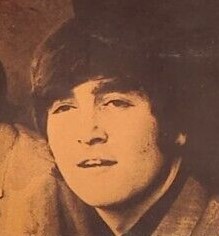 Another thing that stayed in was a slight contribution from Ringo while in the studio. “There were funny little grammatical jokes we used to play. It should have been, ‘everyone of us has all he needs,’ but Ringo turned it into ‘everyone of us has all we need.’ So that became the lyric. It’s wrong, but it’s great. We used to love that." Interestingly, the original handwritten lyric sheet from Paul has these lines crossed out, somebody writing in "Disgusting!! See me," as if written by a school teacher. One can only assume that it was John who didn't approve of these lyrics, which he apparently agreed to because, not only did the lines make it on the released record, John himself vocalizes these words in an echo-like fashion on the recording. Another thing that stayed in was a slight contribution from Ringo while in the studio. “There were funny little grammatical jokes we used to play. It should have been, ‘everyone of us has all he needs,’ but Ringo turned it into ‘everyone of us has all we need.’ So that became the lyric. It’s wrong, but it’s great. We used to love that." Interestingly, the original handwritten lyric sheet from Paul has these lines crossed out, somebody writing in "Disgusting!! See me," as if written by a school teacher. One can only assume that it was John who didn't approve of these lyrics, which he apparently agreed to because, not only did the lines make it on the released record, John himself vocalizes these words in an echo-like fashion on the recording.
 Co-author Barry Miles, in the 1997 book “Many Years From Now,” supposes a date for the composition of the song based on Paul’s meeting with Donovan, stating: “Since ‘Eleanor Rigby’ was finished and arranged for a string octet by the end of April, this must have been early in the month or late March." Since it has been documented in Keven Howlett's liner notes in the 2022 Deluxe editions of "Revolver" that the final verse was "written not long before recording began," the writing of the song appears to have been written between late March and May 26th, 1966, when the vocals were officially recorded. Co-author Barry Miles, in the 1997 book “Many Years From Now,” supposes a date for the composition of the song based on Paul’s meeting with Donovan, stating: “Since ‘Eleanor Rigby’ was finished and arranged for a string octet by the end of April, this must have been early in the month or late March." Since it has been documented in Keven Howlett's liner notes in the 2022 Deluxe editions of "Revolver" that the final verse was "written not long before recording began," the writing of the song appears to have been written between late March and May 26th, 1966, when the vocals were officially recorded.
Recording History
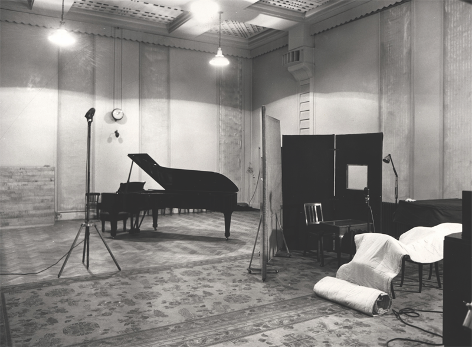 John's early demo of what became the verse of "Yellow Submarine" described above is estimated to have been recorded in March of 1966, undoubtedly at his "Kenwood" home. This was followed by the additional demo detailed above that was made by John and Paul during a collaborative writing session that also occurred at John's home, possibly in April of 1966. While the full song and “Eleanor Rigby” both appear to have been written around the same time, recording of the Ringo vocal song for the upcoming “Revolver” album wasn’t begun until nearly a month after “Eleanor Rigby” was complete (except for a last minute vocal overdub on June 6th, 1966). May 26th, 1966 was the date the group first gave its attention to “Yellow Submarine” in EMI Studio Three, the session beginning at 7 pm. John's early demo of what became the verse of "Yellow Submarine" described above is estimated to have been recorded in March of 1966, undoubtedly at his "Kenwood" home. This was followed by the additional demo detailed above that was made by John and Paul during a collaborative writing session that also occurred at John's home, possibly in April of 1966. While the full song and “Eleanor Rigby” both appear to have been written around the same time, recording of the Ringo vocal song for the upcoming “Revolver” album wasn’t begun until nearly a month after “Eleanor Rigby” was complete (except for a last minute vocal overdub on June 6th, 1966). May 26th, 1966 was the date the group first gave its attention to “Yellow Submarine” in EMI Studio Three, the session beginning at 7 pm.
 “I have a clear memory of them doing the rhythm track of ‘Yellow Submarine,’” explains engineer Geoff Emerick. “As it happened, George Martin was out sick with food poisoning the night we began work on it; he sent his secretary (and future wife), Judy, along to keep an eye on things…and I suppose to make sure we all behaved ourselves! She sat in George’s place at the console making sure that The Beatles got everything they wanted…while I took the helm. George’s absence clearly had a liberating effect on the four Beatles – they behaved like a bunch of schoolboys with a substitute teacher filling in. As a result, there was a lot of clowning around that evening – silliness that George Martin would not have tolerated – and so rehearsals took up a lot more time than the session itself.” “I have a clear memory of them doing the rhythm track of ‘Yellow Submarine,’” explains engineer Geoff Emerick. “As it happened, George Martin was out sick with food poisoning the night we began work on it; he sent his secretary (and future wife), Judy, along to keep an eye on things…and I suppose to make sure we all behaved ourselves! She sat in George’s place at the console making sure that The Beatles got everything they wanted…while I took the helm. George’s absence clearly had a liberating effect on the four Beatles – they behaved like a bunch of schoolboys with a substitute teacher filling in. As a result, there was a lot of clowning around that evening – silliness that George Martin would not have tolerated – and so rehearsals took up a lot more time than the session itself.”
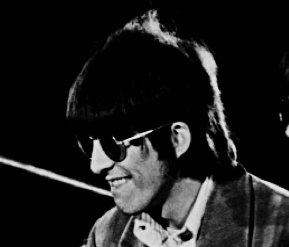 Geoff Emerick also recalls how the song was introduced in the studio: “When Paul first ran the song down on piano, it sounded to my ears more like a children’s song than a pop track, but everyone was enthused and got down to work.” George Harrison also recalls this day: “All I know is just that every time we’d all get around the piano with guitars and start listening to it and arranging it into a record, we’d all fool about.” Geoff Emerick also recalls how the song was introduced in the studio: “When Paul first ran the song down on piano, it sounded to my ears more like a children’s song than a pop track, but everyone was enthused and got down to work.” George Harrison also recalls this day: “All I know is just that every time we’d all get around the piano with guitars and start listening to it and arranging it into a record, we’d all fool about.”
 “It was John Lennon who finally got over his attack of the giggles,” Geoff Emerick continues, “and took on the role of responsible adult, admonishing the others…”come on. It’s 20 to 10 (or 9:40 pm) and we still haven’t made us a record!”…This, of course, only had the effect of sending everyone into another fit of laughter. But eventually they settled down and began recording the backing track.” “It was John Lennon who finally got over his attack of the giggles,” Geoff Emerick continues, “and took on the role of responsible adult, admonishing the others…”come on. It’s 20 to 10 (or 9:40 pm) and we still haven’t made us a record!”…This, of course, only had the effect of sending everyone into another fit of laughter. But eventually they settled down and began recording the backing track.”
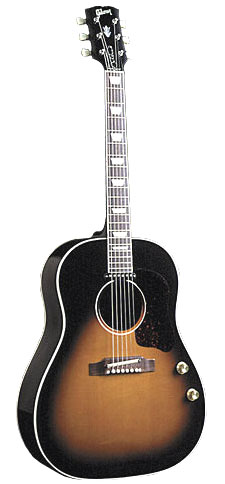 According to Mark Lewisohn’s book “The Beatles Recording Sessions,” the four takes of the rhythm track "had a much longer introduction than was eventually released on disc, with acoustic guitar (John), bass guitar (Paul) and tambourine (George) all preceding Ringo’s drums and the part of the song where the lyrics would come in…The song’s other variation at this stage from what would be released on record was a full, rounded ending. On record it was faded out." With Ringo only playing the bass drum and snare of his kit, all of the instrumentation detailed above was recorded onto track one of the four-track tape, eleven takes of this rhythm track being recorded. For some reason, they spooled back the tape to record another "take four," this being deemed the best and worthy for overdubs. According to Mark Lewisohn’s book “The Beatles Recording Sessions,” the four takes of the rhythm track "had a much longer introduction than was eventually released on disc, with acoustic guitar (John), bass guitar (Paul) and tambourine (George) all preceding Ringo’s drums and the part of the song where the lyrics would come in…The song’s other variation at this stage from what would be released on record was a full, rounded ending. On record it was faded out." With Ringo only playing the bass drum and snare of his kit, all of the instrumentation detailed above was recorded onto track one of the four-track tape, eleven takes of this rhythm track being recorded. For some reason, they spooled back the tape to record another "take four," this being deemed the best and worthy for overdubs.
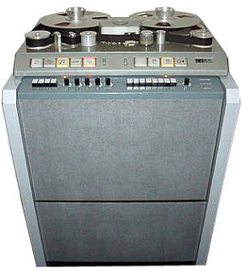 The many overdubs consisted of John, Paul and George singing harmonies during the choruses with the tape machine slowed down to 47.5 kilocycles on track four, Ringo singing lead vocals along with the other Beatles doubling their harmonies with the tape machine at the same slower speed on track three, and Ringo and John shouting "Get out!" and "Look out!" during the choruses (not unlike John and Paul's demo from April) on track two. Geoff Emerick explains that these vocal tracks were recorded "with the tape slightly slowed down so that their voices would sound a little brighter on playback." A reduction mix was then needed in order to allow for more overdubs, this also being made at 47.5 kilocycles to lower the key from G major to F-sharp major, the reduction mix now being labeled "take five." The rhythm track was still contained on track one of the new tape, while Ringo's lead vocal and all of the backing vocals were now contained on track two, the "Get out!" "Look out!" shouts from Ringo and John now being omitted. The many overdubs consisted of John, Paul and George singing harmonies during the choruses with the tape machine slowed down to 47.5 kilocycles on track four, Ringo singing lead vocals along with the other Beatles doubling their harmonies with the tape machine at the same slower speed on track three, and Ringo and John shouting "Get out!" and "Look out!" during the choruses (not unlike John and Paul's demo from April) on track two. Geoff Emerick explains that these vocal tracks were recorded "with the tape slightly slowed down so that their voices would sound a little brighter on playback." A reduction mix was then needed in order to allow for more overdubs, this also being made at 47.5 kilocycles to lower the key from G major to F-sharp major, the reduction mix now being labeled "take five." The rhythm track was still contained on track one of the new tape, while Ringo's lead vocal and all of the backing vocals were now contained on track two, the "Get out!" "Look out!" shouts from Ringo and John now being omitted.
 Before the session was complete, they proceeded to add one final vocal overdub onto track four of the tape. Geoff Emerick recounts: “At a certain point, John decided that the third verse needed some spicing up, so he dashed into the studio and began answering each of Ringo’s sung lines in a silly voice that I further altered to make it sound like he was talking over a ship’s megaphone.” George Harrison recalls: “John’s doing the voice that sounds like someone talking down a tube or ship’s funnel as they do in the merchant marine.” By 1 o’clock the next morning, they could retire for the night knowing that they indeed made some good progress in recording the song, completing the rhythm track along with the lead and harmony vocals. Before the session was complete, they proceeded to add one final vocal overdub onto track four of the tape. Geoff Emerick recounts: “At a certain point, John decided that the third verse needed some spicing up, so he dashed into the studio and began answering each of Ringo’s sung lines in a silly voice that I further altered to make it sound like he was talking over a ship’s megaphone.” George Harrison recalls: “John’s doing the voice that sounds like someone talking down a tube or ship’s funnel as they do in the merchant marine.” By 1 o’clock the next morning, they could retire for the night knowing that they indeed made some good progress in recording the song, completing the rhythm track along with the lead and harmony vocals.
 “After that first night of working on ‘Yellow Submarine,’ the ‘Revolver’ sessions were suspended for nearly a week because of George Martin’s illness,” Geoff Emerick relates. “When we finally returned to the studio, a recovered George was back in the producer’s chair…but, despite his return, that was to be the day the lunatics really took over the asylum!” This twelve-hour session, on June 1st, 1966, began at 2:30 pm in EMI Studio Two. John Lennon describes this day by saying: “We virtually made the track come alive in the studio.” “After that first night of working on ‘Yellow Submarine,’ the ‘Revolver’ sessions were suspended for nearly a week because of George Martin’s illness,” Geoff Emerick relates. “When we finally returned to the studio, a recovered George was back in the producer’s chair…but, despite his return, that was to be the day the lunatics really took over the asylum!” This twelve-hour session, on June 1st, 1966, began at 2:30 pm in EMI Studio Two. John Lennon describes this day by saying: “We virtually made the track come alive in the studio.”
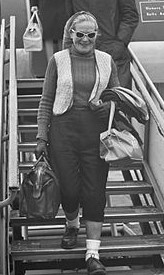 This day's first order of business concerned concocting a rather bizarre feature to the recording that was eventually dropped entirely. “Most of that afternoon was spent trying to record a spoken word introduction to ‘Yellow Submarine,’” recounts Geoff Emerick. "Back in 1960, there had been a well-publicized charity walk by a doctor named Barbara Moore from Land’s End to John O’Groats – the two points farthest apart on the British mainland. John, who often had his head buried in a newspaper when he wasn’t playing guitar or singing, had written a short medieval-sounding poem that somehow tied the walk to the song title, and he was determined to have Ringo recite it, accompanied by the sound of marching feet." This day's first order of business concerned concocting a rather bizarre feature to the recording that was eventually dropped entirely. “Most of that afternoon was spent trying to record a spoken word introduction to ‘Yellow Submarine,’” recounts Geoff Emerick. "Back in 1960, there had been a well-publicized charity walk by a doctor named Barbara Moore from Land’s End to John O’Groats – the two points farthest apart on the British mainland. John, who often had his head buried in a newspaper when he wasn’t playing guitar or singing, had written a short medieval-sounding poem that somehow tied the walk to the song title, and he was determined to have Ringo recite it, accompanied by the sound of marching feet."
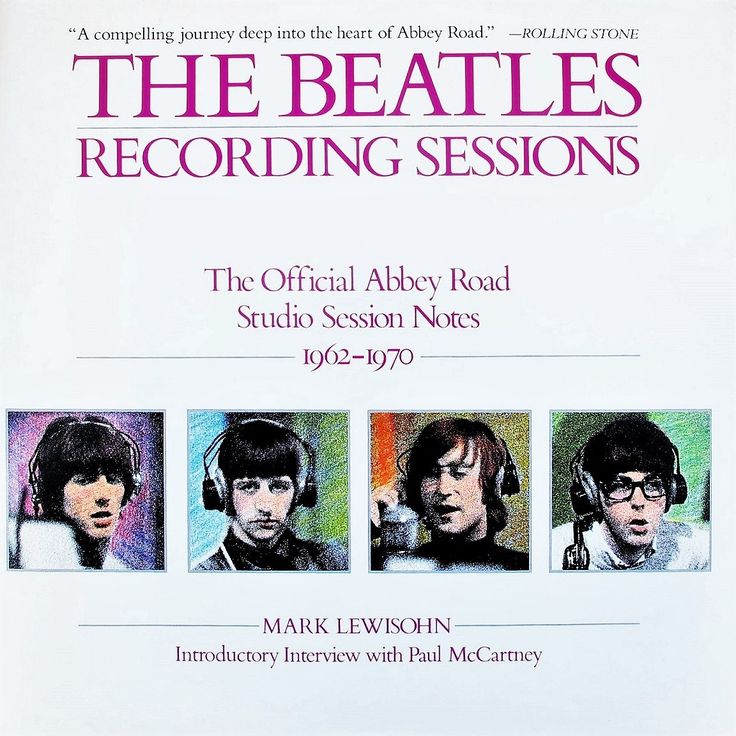 “I pulled out the old radio trick of shaking coal in a cardboard box to simulate footsteps, and Ringo did his best to emote, deadpan, but the final result was, in a word, boring. Even though we spent hours and hours putting it together, the whole idea was eventually scrapped.” Mark Lewisohn adds in "The Beatles Recording Sessions" that this idea, which was recorded onto another four-track tape, was to be “faded up into the acoustic guitar intro and lasting for as long as 31 seconds. It consisted of at least four separate superimpositions, dominated by Ringo’s speaking voice but aided and abetted by George, Paul and John all doing likewise, mixed into one mélange.” John Lennon’s poem included the lines: “And we will march to free the day to see them gathered there, from Land O’Groats to John O’Green, from Stepney to Utrecht, to see a yellow submarine, we love it!” “I pulled out the old radio trick of shaking coal in a cardboard box to simulate footsteps, and Ringo did his best to emote, deadpan, but the final result was, in a word, boring. Even though we spent hours and hours putting it together, the whole idea was eventually scrapped.” Mark Lewisohn adds in "The Beatles Recording Sessions" that this idea, which was recorded onto another four-track tape, was to be “faded up into the acoustic guitar intro and lasting for as long as 31 seconds. It consisted of at least four separate superimpositions, dominated by Ringo’s speaking voice but aided and abetted by George, Paul and John all doing likewise, mixed into one mélange.” John Lennon’s poem included the lines: “And we will march to free the day to see them gathered there, from Land O’Groats to John O’Green, from Stepney to Utrecht, to see a yellow submarine, we love it!”
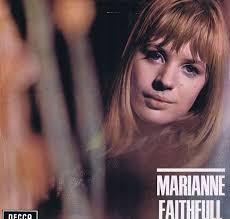 With this complete, it was time for a break. The Beatles met up with some friends for dinner who also received a special invitation. Geoff recalls: “Paul had conceived ‘Yellow Submarine’ as a singalong, and so a few of the band’s friends and significant others had been invited along for the evening session. By then, everyone was distinctly in a party mood…Following a long dinner break (during which we suspected more than food was being ingested), a raucous group began filtering in, including Mick Jagger and Brian Jones, along with Mick Jagger’s current girlfriend Marianne Faithfull and George Harrison’s wife, Pattie. They were all dressed in the finest Carnaby Street outfits, the women in miniskirts and flowing blouses, the men in purple bell-bottoms and fur jackets.” With this complete, it was time for a break. The Beatles met up with some friends for dinner who also received a special invitation. Geoff recalls: “Paul had conceived ‘Yellow Submarine’ as a singalong, and so a few of the band’s friends and significant others had been invited along for the evening session. By then, everyone was distinctly in a party mood…Following a long dinner break (during which we suspected more than food was being ingested), a raucous group began filtering in, including Mick Jagger and Brian Jones, along with Mick Jagger’s current girlfriend Marianne Faithfull and George Harrison’s wife, Pattie. They were all dressed in the finest Carnaby Street outfits, the women in miniskirts and flowing blouses, the men in purple bell-bottoms and fur jackets.”
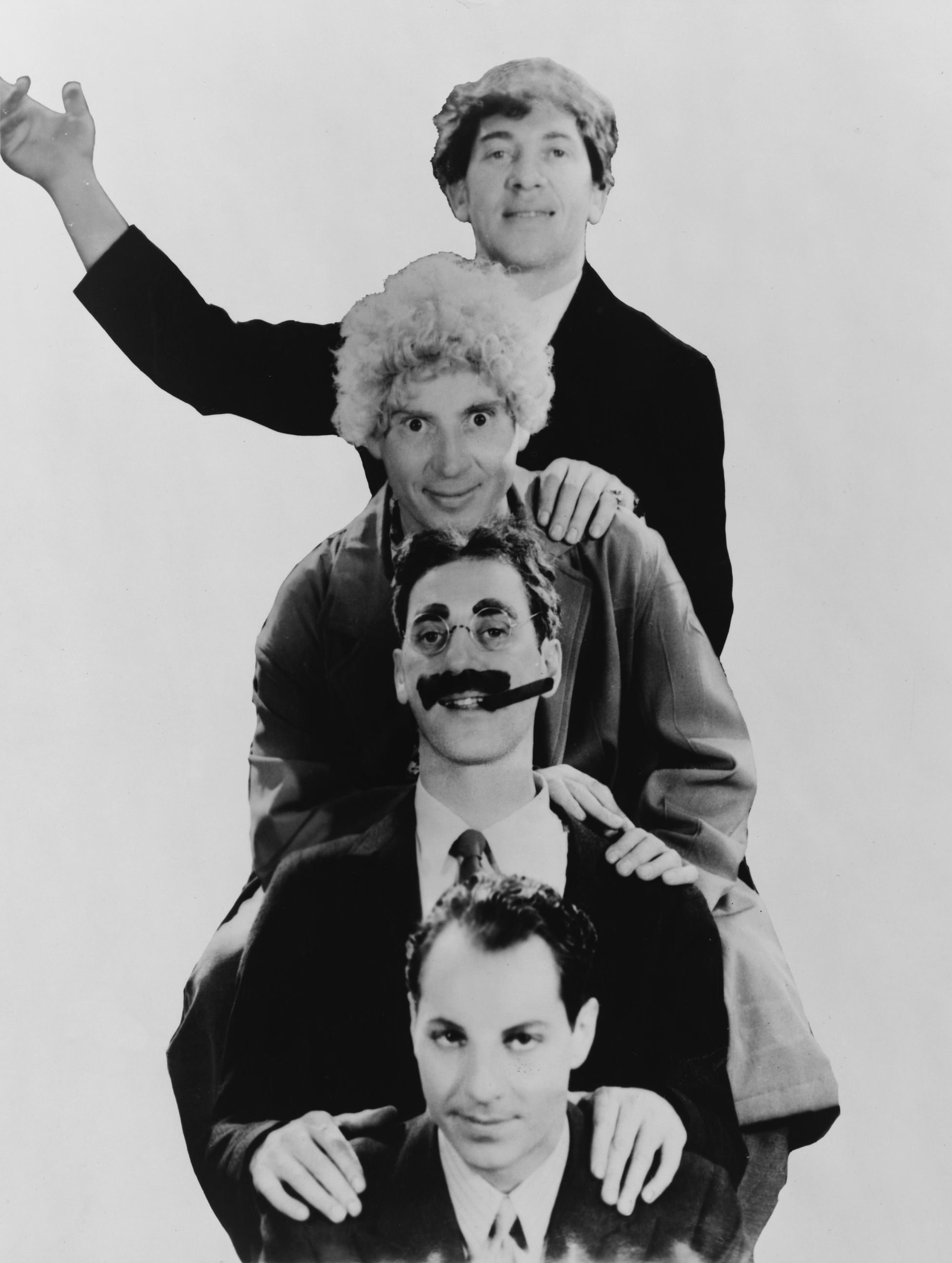 “Phil (McDonald) and I put up a few ambient microphones around the studio,” Geoff Emerick continues, “and I decided to also give everyone a handheld mic on a long lead so they could move around freely – there was no way I was going to try to contain that lot!...The whole marijuana-influenced scene that evening was completely zany, straight out of a Marx Brothers movie.” “Phil (McDonald) and I put up a few ambient microphones around the studio,” Geoff Emerick continues, “and I decided to also give everyone a handheld mic on a long lead so they could move around freely – there was no way I was going to try to contain that lot!...The whole marijuana-influenced scene that evening was completely zany, straight out of a Marx Brothers movie.”
 Mark Lewisohn explained: "Just inside the doorway of Studio Two…there is a small room cum cupboard called the trap room which houses a many and varied collection of assorted oddments – everything from a cash till to old hosepipes and a football supporter’s rattle…in 1966 it was full to overflowing with such items. The Beatles decided to raid it and almost all of the effects on ‘Yellow Submarine’ came from there." Tracks three and four of the four-track tape were then filled with many incidental sounds recorded on this day, apart from the John's vocal shouting in the last verse that were recorded onto track four descibed above. Mark Lewisohn explained: "Just inside the doorway of Studio Two…there is a small room cum cupboard called the trap room which houses a many and varied collection of assorted oddments – everything from a cash till to old hosepipes and a football supporter’s rattle…in 1966 it was full to overflowing with such items. The Beatles decided to raid it and almost all of the effects on ‘Yellow Submarine’ came from there." Tracks three and four of the four-track tape were then filled with many incidental sounds recorded on this day, apart from the John's vocal shouting in the last verse that were recorded onto track four descibed above.
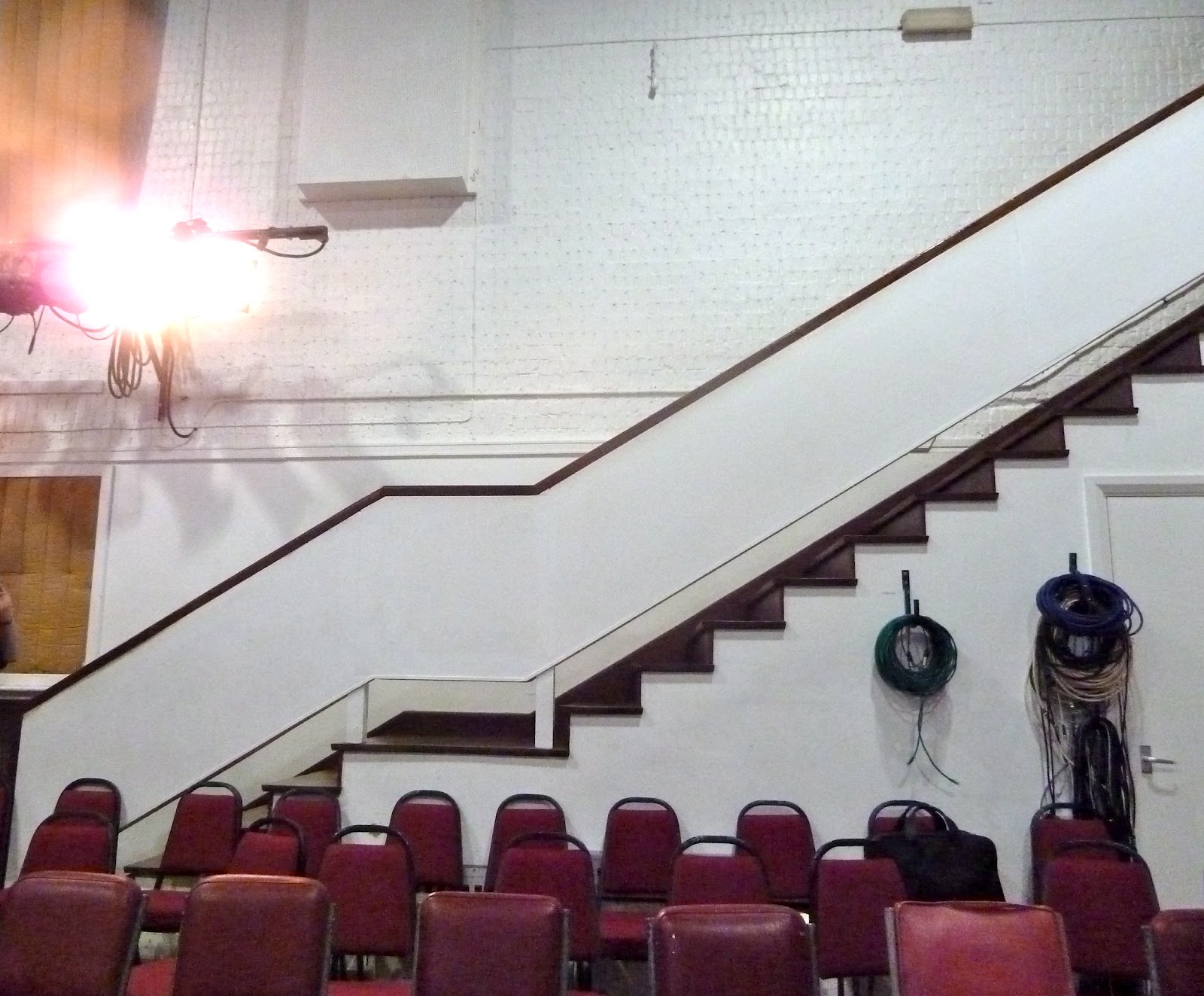 "The cupboard had everything," Geoff Emerick recalls. "Chains, ships bells, hand bells from wartime, hooters, tap dancing mats, wind machines, thunder storm machines, whistles, everything!" Geoff Emerick adds, "The entire EMI collection of percussion instruments and sound effects boxes were strewn all over the studio floor, with people grabbing bells and whistles and gongs at random. To simulate the sound of a submerging, John grabbed a straw and began blowing bubbles into a glass – fortunately, I was able to move a mic nearby in time to record it for posterity." "The cupboard had everything," Geoff Emerick recalls. "Chains, ships bells, hand bells from wartime, hooters, tap dancing mats, wind machines, thunder storm machines, whistles, everything!" Geoff Emerick adds, "The entire EMI collection of percussion instruments and sound effects boxes were strewn all over the studio floor, with people grabbing bells and whistles and gongs at random. To simulate the sound of a submerging, John grabbed a straw and began blowing bubbles into a glass – fortunately, I was able to move a mic nearby in time to record it for posterity."
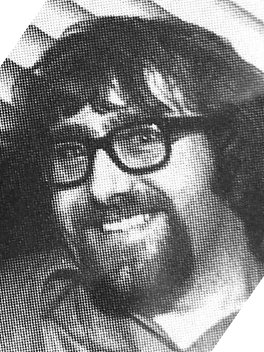 The party atmosphere spread to the EMI staff as well, employees John Skinner and Terry Condon joining in on the fun. “There was a metal bath in the trap room,” explains John Skinner, “the type people used to bathe in in front of the fire. We filled it with water, got some old chains and swirled them around. It worked really well. I’m sure no one listening to the song realized what was making the noise.” Among the other sound effects used on the recording was Brian Jones tapping drinking glasses and blowing on an ancient wind instrument called an ocarina in the second verse, The Beatles chauffer Alf Bicknell rattling old chains, and roadie Mal Evans beating a bass drum as they all joined in singing the final chorus. "I was bashing chains in a bucket of water for sound effects and shuffling sand" the roadie recalls as recounted in Kenneth Womack's book "Living The Beatles Legend," this possibly reffering to the coal shoveling used in John's introductory speech that was not used in the finished song. The party atmosphere spread to the EMI staff as well, employees John Skinner and Terry Condon joining in on the fun. “There was a metal bath in the trap room,” explains John Skinner, “the type people used to bathe in in front of the fire. We filled it with water, got some old chains and swirled them around. It worked really well. I’m sure no one listening to the song realized what was making the noise.” Among the other sound effects used on the recording was Brian Jones tapping drinking glasses and blowing on an ancient wind instrument called an ocarina in the second verse, The Beatles chauffer Alf Bicknell rattling old chains, and roadie Mal Evans beating a bass drum as they all joined in singing the final chorus. "I was bashing chains in a bucket of water for sound effects and shuffling sand" the roadie recalls as recounted in Kenneth Womack's book "Living The Beatles Legend," this possibly reffering to the coal shoveling used in John's introductory speech that was not used in the finished song.
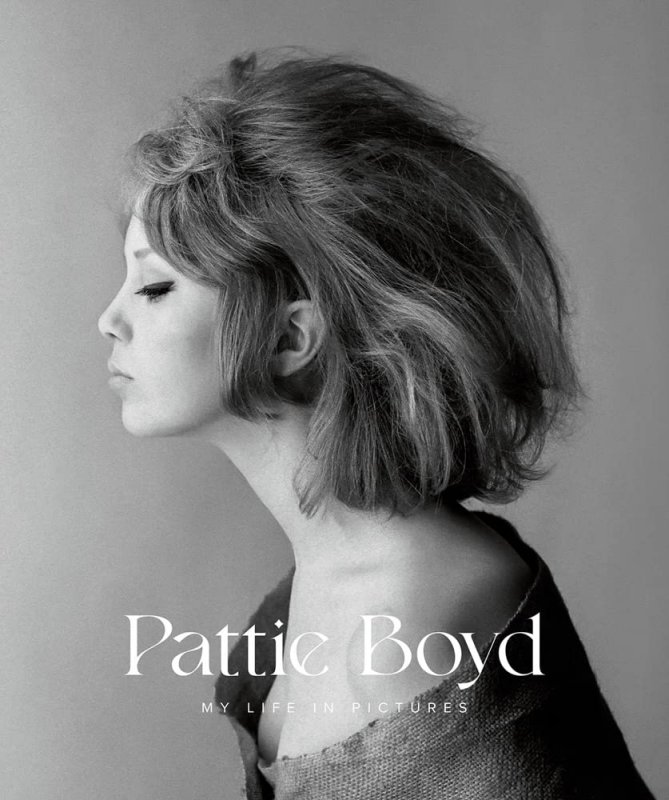 The raucous atmosphere of this recording session was actually simulated during the second verse of the song. “On the final track, there’s actually that very small party happening,” recalls George Harrison, adding: “As I seem to remember, there are a few screams and what sounds like a small crowd noise in the background.” Geoff Emerick adds: “Those background screams during the second verse came from Pattie Harrison, which was always ironic to me, considering how quiet she usually was.” The raucous atmosphere of this recording session was actually simulated during the second verse of the song. “On the final track, there’s actually that very small party happening,” recalls George Harrison, adding: “As I seem to remember, there are a few screams and what sounds like a small crowd noise in the background.” Geoff Emerick adds: “Those background screams during the second verse came from Pattie Harrison, which was always ironic to me, considering how quiet she usually was.”
 The instrumental section of the song was not filled with an instrument at all but sound effects interspersed with muffled nautical voices performed mostly by John and Paul, reportedly shouted into tin cans. “When John ran back into the echo chamber (of Studio Two) and ad-libbed his “Captain, captain” routine to the sound of clanking bells and chains,” Geoff Emerick recalls in his book "Here, There And Everywhere," “we were all doubled over with laughter. The ambience around his voice was just perfect, and that was the way that all those bits happened. Although the record sounds quite produced, it was actually spur of the moment – John and the others were just out there having a good time. Somehow it worked, though, despite the chaos.” According to written sources, other adlib phrases heard in this section of the song include John shouting “full speed ahead, Mr. Bosun, full speed ahead,” followed by Paul replying, “Full speed immediately, sir,” Ringo adding “lock the chambers” (or possibly “cut the cable / drop the cable”) from a distance away in EMI Studio Two, as he recalled during an interview segment of the "Beatles Anthology" series in the '90s. The instrumental section of the song was not filled with an instrument at all but sound effects interspersed with muffled nautical voices performed mostly by John and Paul, reportedly shouted into tin cans. “When John ran back into the echo chamber (of Studio Two) and ad-libbed his “Captain, captain” routine to the sound of clanking bells and chains,” Geoff Emerick recalls in his book "Here, There And Everywhere," “we were all doubled over with laughter. The ambience around his voice was just perfect, and that was the way that all those bits happened. Although the record sounds quite produced, it was actually spur of the moment – John and the others were just out there having a good time. Somehow it worked, though, despite the chaos.” According to written sources, other adlib phrases heard in this section of the song include John shouting “full speed ahead, Mr. Bosun, full speed ahead,” followed by Paul replying, “Full speed immediately, sir,” Ringo adding “lock the chambers” (or possibly “cut the cable / drop the cable”) from a distance away in EMI Studio Two, as he recalled during an interview segment of the "Beatles Anthology" series in the '90s.
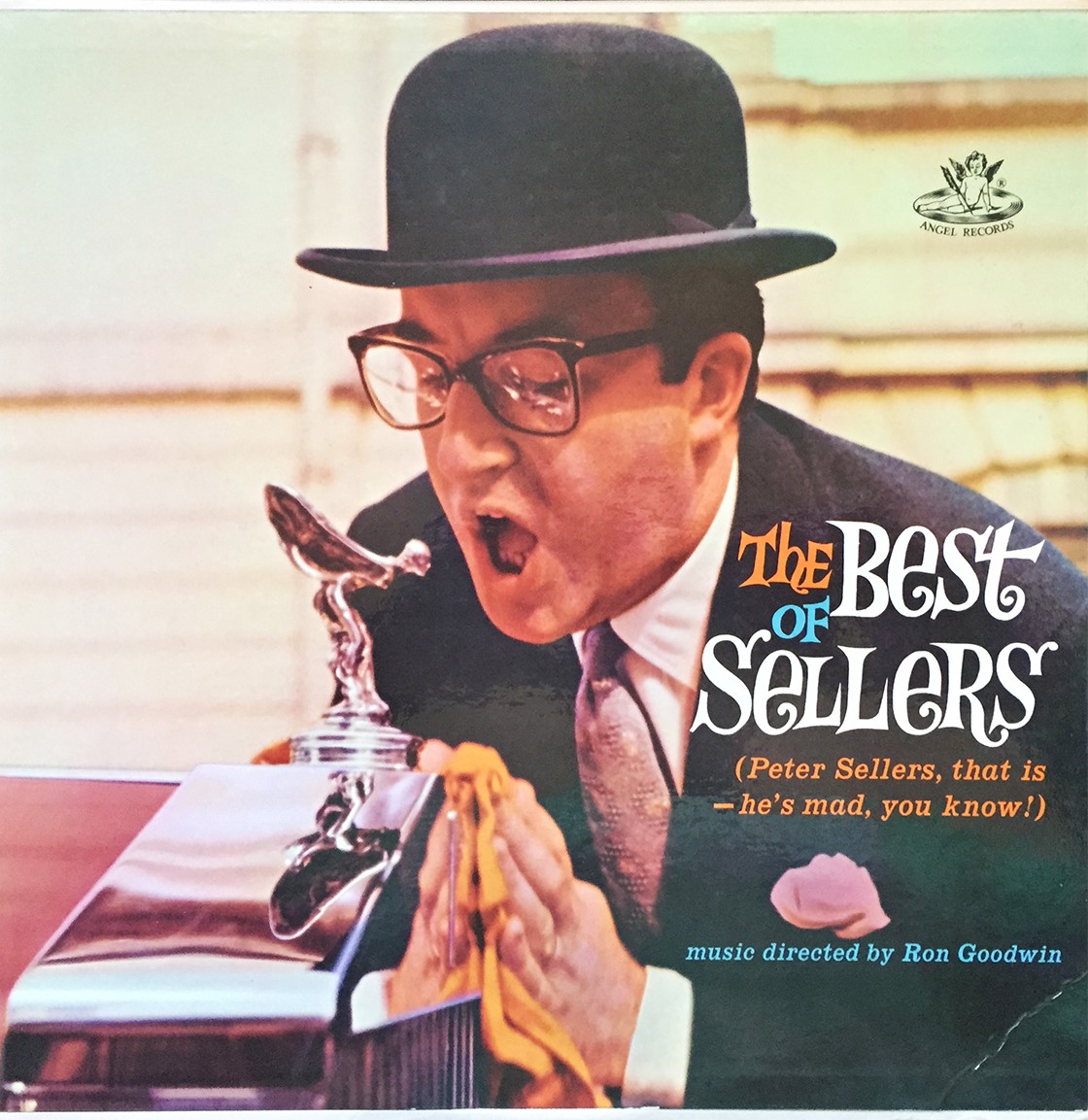 The chaos was controlled, however, by someone who was experienced in how to do it. “George Martin had made his name producing comedy records with The Goons and Peter Sellers,” explains Barry Miles in “Many Years From Now,’ "and sound effects were one of his specialties." Author Kevin Howlett's notes in the Deluxe edition of "Revolver" writes, "Sound effects were created either with tape manipulation - the noise of a motor was varispeeded up and down - or something as simple as John blowing bubbles through a straw in a glass of water. The chaos was controlled, however, by someone who was experienced in how to do it. “George Martin had made his name producing comedy records with The Goons and Peter Sellers,” explains Barry Miles in “Many Years From Now,’ "and sound effects were one of his specialties." Author Kevin Howlett's notes in the Deluxe edition of "Revolver" writes, "Sound effects were created either with tape manipulation - the noise of a motor was varispeeded up and down - or something as simple as John blowing bubbles through a straw in a glass of water.
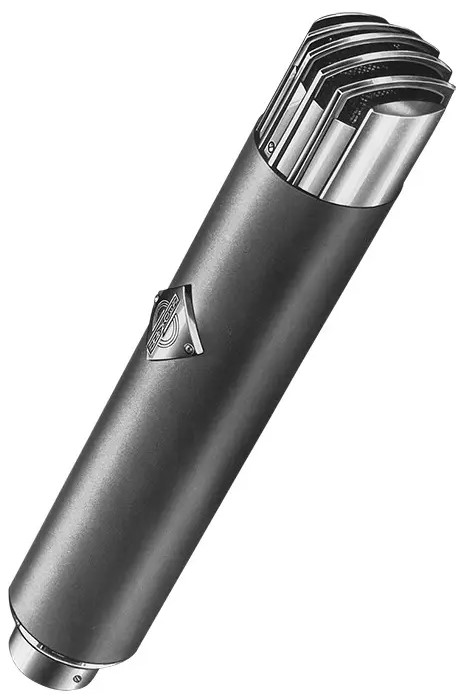 Because of the inspiration of the moment (and possibly the drugs), Lennon introduced the idea of recording his voice under water, suggesting either by singing while gargling (nearly choking in the process), submerging himself in a tank of water (which George Martin talked him out of), or submerging a microphone into a bottle of water (which the EMI staff attempted). Engineer Ken Townsend recalled: "When John climbed up the steps of Studio Two and entered the control room, he would often come up with a poser. In this session, he asaked, 'How can we get an underwater sound?' My solution was to fill a quart milk bottle with water and insert a (Neumann) KM53, our smallest microphone. It was wrapped in the polythene bag my wife had used to pack sandwiches for me. With an all-round configuration, they were able to sing around it. It was not just The Beatles who were crazy!" Because of the inspiration of the moment (and possibly the drugs), Lennon introduced the idea of recording his voice under water, suggesting either by singing while gargling (nearly choking in the process), submerging himself in a tank of water (which George Martin talked him out of), or submerging a microphone into a bottle of water (which the EMI staff attempted). Engineer Ken Townsend recalled: "When John climbed up the steps of Studio Two and entered the control room, he would often come up with a poser. In this session, he asaked, 'How can we get an underwater sound?' My solution was to fill a quart milk bottle with water and insert a (Neumann) KM53, our smallest microphone. It was wrapped in the polythene bag my wife had used to pack sandwiches for me. With an all-round configuration, they were able to sing around it. It was not just The Beatles who were crazy!"
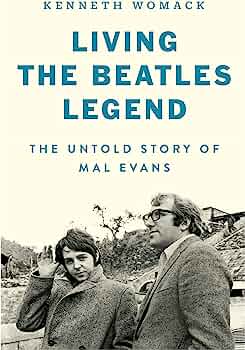 Another recollection about this event involves roadie Mal Evans producing a condom from his "doctor's bag," which he customarily brought along during Beatles' tours, and securing it around the microphone "dunking it in a water-filled milk bottle, which had been helpfully suppled by Neil (Aspinall)," as related in Kenneth Womack's book "Living The Beatles Legend." "Well done, Malcolm," John Lennon commended, "after all, we don't want the microphone to be getting in the family way, do we?" In Keith Badman's book The Beatles Off The Record," George Martin recalls, "This original idea didn't work out, so Mal Evans evolved an ingenious method by which the words were spoken by John through his guitar amplifier," this being recorded onto track four the the four track tape at this point. Another recollection about this event involves roadie Mal Evans producing a condom from his "doctor's bag," which he customarily brought along during Beatles' tours, and securing it around the microphone "dunking it in a water-filled milk bottle, which had been helpfully suppled by Neil (Aspinall)," as related in Kenneth Womack's book "Living The Beatles Legend." "Well done, Malcolm," John Lennon commended, "after all, we don't want the microphone to be getting in the family way, do we?" In Keith Badman's book The Beatles Off The Record," George Martin recalls, "This original idea didn't work out, so Mal Evans evolved an ingenious method by which the words were spoken by John through his guitar amplifier," this being recorded onto track four the the four track tape at this point.
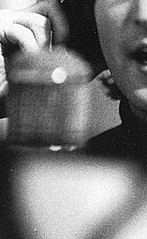 There was one technical mishap that occurred concerning this John Lennon vocal track on May 26th, 1966. Geoff Emerick explains: “The verse begins, “As we live / a life of ease,” but you don’t actually hear John’s voice until the third and fourth lines. In fact, I had recorded him repeating the first two lines also, but a few days later, Phil McDonald accidentally erased the beginning of them – one of the few times his usually accurate drop-in skills failed him. From his station in the machine room, he got on the intercom and let George and me know of his gaffe while The Beatles were out of earshot. I could hear the distress in his voice and could sympathize – almost every assistant had made a similar mistake at one time or another.” There was one technical mishap that occurred concerning this John Lennon vocal track on May 26th, 1966. Geoff Emerick explains: “The verse begins, “As we live / a life of ease,” but you don’t actually hear John’s voice until the third and fourth lines. In fact, I had recorded him repeating the first two lines also, but a few days later, Phil McDonald accidentally erased the beginning of them – one of the few times his usually accurate drop-in skills failed him. From his station in the machine room, he got on the intercom and let George and me know of his gaffe while The Beatles were out of earshot. I could hear the distress in his voice and could sympathize – almost every assistant had made a similar mistake at one time or another.”
 “John realized the line was gone the next time we played the multitrack – nothing ever got by him – and he wasn’t too happy about it, but rather than pin the blame on Phil (McDonald), George (Martin) and I quickly concocted a story about needing the track for one of the overdubs. We all tended to close ranks and protect one another at times like that, and I know that Phil (McDonald) was very relieved that he didn’t have to face John’s wrath.” In actuality, Lennon’s first line “as we live” is what was accidentally recorded over, the second line “a life of ease” wasn’t, this appearing in the released mono mix. “John realized the line was gone the next time we played the multitrack – nothing ever got by him – and he wasn’t too happy about it, but rather than pin the blame on Phil (McDonald), George (Martin) and I quickly concocted a story about needing the track for one of the overdubs. We all tended to close ranks and protect one another at times like that, and I know that Phil (McDonald) was very relieved that he didn’t have to face John’s wrath.” In actuality, Lennon’s first line “as we live” is what was accidentally recorded over, the second line “a life of ease” wasn’t, this appearing in the released mono mix.
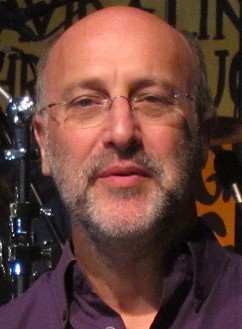 Another interesting feature of the song that appeared during this session was the brass band that is introduced by Ringo at the end of the second verse with the words: “And the band begins to play.” While Mark Lewisohn's otherwise excellent “Recording Sessions” book attributes this brass overdub to “outside session musicians,” Geoff Emerick has quite another story. Another interesting feature of the song that appeared during this session was the brass band that is introduced by Ringo at the end of the second verse with the words: “And the band begins to play.” While Mark Lewisohn's otherwise excellent “Recording Sessions” book attributes this brass overdub to “outside session musicians,” Geoff Emerick has quite another story.
 “Throughout the day, George Martin and I had been overdubbing various nautical sounds (like waves in the second verse) from sound effects records in the EMI library. That same library was to be put to good use later that night, when it came time to add a solo to the song. By then, everyone was too knackered – or stoned – to give much attention to the two-bar gap that had been left there for a solo, and with the enormous amount of time that had already been spent on the track, George Martin wasn’t about to begin the long process of having George Harrison strap on a guitar and laboriously come up with a part.” “Throughout the day, George Martin and I had been overdubbing various nautical sounds (like waves in the second verse) from sound effects records in the EMI library. That same library was to be put to good use later that night, when it came time to add a solo to the song. By then, everyone was too knackered – or stoned – to give much attention to the two-bar gap that had been left there for a solo, and with the enormous amount of time that had already been spent on the track, George Martin wasn’t about to begin the long process of having George Harrison strap on a guitar and laboriously come up with a part.”
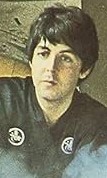 “Instead, someone, probably Paul, came up with the idea of using a brass band. There was, of course, no way that a band could be booked to come in on such short notice, and in any event, George Martin probably wouldn’t have allocated budget to hire them, not for such a short section. So instead, (George Martin) came up with an ingenious solution – one that, with the passage of time, he has apparently forgotten.” “Instead, someone, probably Paul, came up with the idea of using a brass band. There was, of course, no way that a band could be booked to come in on such short notice, and in any event, George Martin probably wouldn’t have allocated budget to hire them, not for such a short section. So instead, (George Martin) came up with an ingenious solution – one that, with the passage of time, he has apparently forgotten.”
“Phil McDonald was duly dispatched to fetch some records of Sousa marches, and after auditioning several of them, George Martin and Paul finally identified one that was suitable – it was in the same key as ‘Yellow Submarine’ and seemed to fit well enough. The problem here was one of copyright; in British law, if you used more than a few seconds of a recording on a commercial release, you had to get permission from the song’s publisher and then pay a negotiable royalty.”
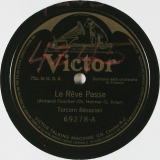 “George wasn’t about to do either, so he told me to record the section on a clean piece of two-track tape and then chop it into pieces, toss the pieces into the air, and splice them back together. The end result should have been random, but, somehow, when I pieced it back together, it came back nearly the same way it had been in the first place! No one could believe their ears; we were all thoroughly amazed. But by this point, it was very late at night and we were running out of time – and patience – so George had me simply swap over two of the pieces and we flew it into the multitrack master, being careful to fade it out quickly. That’s why the solo is so brief, and that’s why it sounds almost musical, but not quite. At least it’s unrecognizable enough that EMI was never sued by the original copyright holder of the song.” According to information in the 2022 Deluxe editions of "Revolver," "The brief section of brass band music was taken from Abbey Road Sound Effects Tape Volume 46. A phrase from 'Le Reve Passe' (a 1906 composition by Georges Krier and Charles Helmer) performed in B-flat was slowed down so that its pitch matched the key of 'Yellow Submarine.' After some editing for timing reasons, the phrase slotted neatly into the gap that was left to be filled later." “George wasn’t about to do either, so he told me to record the section on a clean piece of two-track tape and then chop it into pieces, toss the pieces into the air, and splice them back together. The end result should have been random, but, somehow, when I pieced it back together, it came back nearly the same way it had been in the first place! No one could believe their ears; we were all thoroughly amazed. But by this point, it was very late at night and we were running out of time – and patience – so George had me simply swap over two of the pieces and we flew it into the multitrack master, being careful to fade it out quickly. That’s why the solo is so brief, and that’s why it sounds almost musical, but not quite. At least it’s unrecognizable enough that EMI was never sued by the original copyright holder of the song.” According to information in the 2022 Deluxe editions of "Revolver," "The brief section of brass band music was taken from Abbey Road Sound Effects Tape Volume 46. A phrase from 'Le Reve Passe' (a 1906 composition by Georges Krier and Charles Helmer) performed in B-flat was slowed down so that its pitch matched the key of 'Yellow Submarine.' After some editing for timing reasons, the phrase slotted neatly into the gap that was left to be filled later."
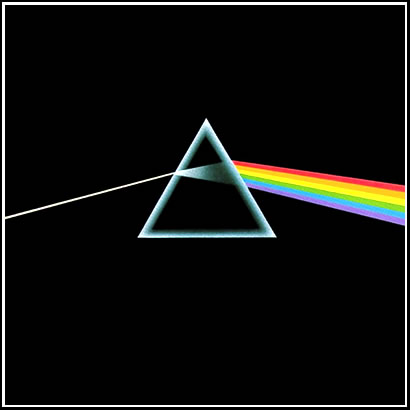 Another sound effect reportedly fetched from the EMI library on this day was the sound of a cash register, the same exact sound effect that would eventually wind up on Pink Floyd's song "Money" seven years later, their album "The Dark Side Of The Moon" also being recorded at EMI Studios. Briefly heard (with discerning ears) during the instrumental section of "Yellow Submarine," this effect seems quite unusual for its context. I don't know of too many submarines that are equipped with cash registers. :-) Another sound effect reportedly fetched from the EMI library on this day was the sound of a cash register, the same exact sound effect that would eventually wind up on Pink Floyd's song "Money" seven years later, their album "The Dark Side Of The Moon" also being recorded at EMI Studios. Briefly heard (with discerning ears) during the instrumental section of "Yellow Submarine," this effect seems quite unusual for its context. I don't know of too many submarines that are equipped with cash registers. :-)
 According to “The Beatles Recording Sessions,” “Engineer Ken Townsend remembers Mal Evans marching around the studio wearing a huge bass drum on his chest, with everyone else in line behind him, conga-style, singing ‘We all live in a yellow submarine’” after the session was over. As documented in the "Revolver" Deluxe editions, Ken Townsend relates, "After the final take, John shouted to us upstairs, 'Come on, lads!' Geoff (Emerick) and I went down the staricase and then the tape op Phil McDonald played the song back on the White Elephants (speakers) in the studio. Mal Evans had strapped this huge bass drum to his chest and we all followed him doing the conga! I tagged on behind George Harrison and we went out of the doors of Studio Two along the corridor into the canteen and then back again. Mal Evans had wedged the doors wide open. It was going midnight, as usual, so only the security guard Len Moss was still in the building." According to “The Beatles Recording Sessions,” “Engineer Ken Townsend remembers Mal Evans marching around the studio wearing a huge bass drum on his chest, with everyone else in line behind him, conga-style, singing ‘We all live in a yellow submarine’” after the session was over. As documented in the "Revolver" Deluxe editions, Ken Townsend relates, "After the final take, John shouted to us upstairs, 'Come on, lads!' Geoff (Emerick) and I went down the staricase and then the tape op Phil McDonald played the song back on the White Elephants (speakers) in the studio. Mal Evans had strapped this huge bass drum to his chest and we all followed him doing the conga! I tagged on behind George Harrison and we went out of the doors of Studio Two along the corridor into the canteen and then back again. Mal Evans had wedged the doors wide open. It was going midnight, as usual, so only the security guard Len Moss was still in the building."
With this accomplished, and with the motley crew of visitors filed out of the studio, the recording of “Yellow Submarine” was complete, being 2:30 am the following morning and only mixing to be done to get it to its completed state.
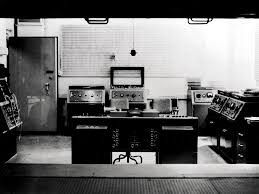 The first mono mix, described by Mark Lewisohn as a “rough remix,” was performed on June 2nd, 1966, the day after the recording was complete. This was created by George Martin, Geoff Emerick and Phil McDonald in the control room of EMI Studio Two directly after the group spent the day recording George Harrison’s “I Want To Tell You.” Although this mix never saw the light of day, we can assume that it contained the spoken word introduction they labored over the previous day. The first mono mix, described by Mark Lewisohn as a “rough remix,” was performed on June 2nd, 1966, the day after the recording was complete. This was created by George Martin, Geoff Emerick and Phil McDonald in the control room of EMI Studio Two directly after the group spent the day recording George Harrison’s “I Want To Tell You.” Although this mix never saw the light of day, we can assume that it contained the spoken word introduction they labored over the previous day.
 The released mono mix was created the following day, June 3rd, 1966, also in the control room of EMI Studio Two by the same EMI staff. Five mono mixes were made on this day, presumably the fifth being the released version for the mono album and single. The decision was definitely made at this point to scrap the spoken word introduction since it didn’t appear on record. They did decide to begin the song with John’s acoustic guitar and Ringo’s vocals coming in at the same time, and they were careful to fade down the sound effects at the end of the instrumental section so as not to hinder Ringo’s vocal line “As we live a life of ease” at the start of the final verse. They were also careful to fade it back up quickly enough to hear John’s answering line for “life of ease.” The released mono mix was created the following day, June 3rd, 1966, also in the control room of EMI Studio Two by the same EMI staff. Five mono mixes were made on this day, presumably the fifth being the released version for the mono album and single. The decision was definitely made at this point to scrap the spoken word introduction since it didn’t appear on record. They did decide to begin the song with John’s acoustic guitar and Ringo’s vocals coming in at the same time, and they were careful to fade down the sound effects at the end of the instrumental section so as not to hinder Ringo’s vocal line “As we live a life of ease” at the start of the final verse. They were also careful to fade it back up quickly enough to hear John’s answering line for “life of ease.”
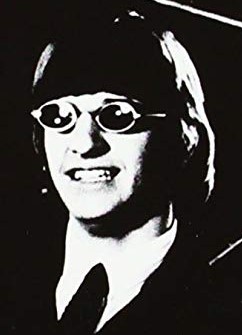 They took two stabs at the stereo mix on June 22nd, 1966 in the control room of EMI Studio Three, George Martin, Geoff Emerick and 2nd engineer Jerry Boys presiding. The second stereo mix appears to have been the keeper, the decision being made to silence Lennon’s opening guitar chord, leaving Ringo to vocalize the words “In the” a cappella at the beginning of the song. Less care was given regarding the sound effects track at the conclusion of the instrumental section this time around, them leaving it up somewhat longer to slightly infringe upon Ringo’s line “As we live a life of ease.” Then, they forgot to turn it back up again to hear the beginnings of John’s humorous answering vocals, it finally coming in quietly on the line “every one of us” and then gradually increasing in volume through the rest of the verse. They took two stabs at the stereo mix on June 22nd, 1966 in the control room of EMI Studio Three, George Martin, Geoff Emerick and 2nd engineer Jerry Boys presiding. The second stereo mix appears to have been the keeper, the decision being made to silence Lennon’s opening guitar chord, leaving Ringo to vocalize the words “In the” a cappella at the beginning of the song. Less care was given regarding the sound effects track at the conclusion of the instrumental section this time around, them leaving it up somewhat longer to slightly infringe upon Ringo’s line “As we live a life of ease.” Then, they forgot to turn it back up again to hear the beginnings of John’s humorous answering vocals, it finally coming in quietly on the line “every one of us” and then gradually increasing in volume through the rest of the verse.
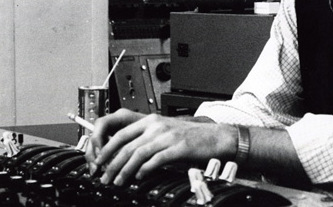 As for the stereo placement of the elements, all the lead and harmony vocals are completely in the right channel while the rhythm track is entirely in the left channel. The sound effects and nautical voices, as well as John’s answering lines in the final verse, are basically centered in the mix. As for the stereo placement of the elements, all the lead and harmony vocals are completely in the right channel while the rhythm track is entirely in the left channel. The sound effects and nautical voices, as well as John’s answering lines in the final verse, are basically centered in the mix.
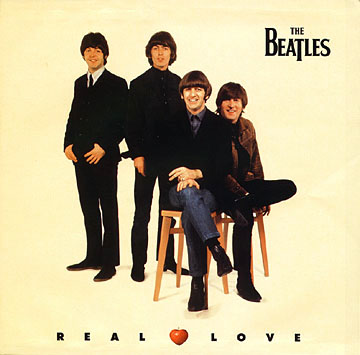 Sometime during 1995, George Martin and Geoff Emerick re-entered EMI Studios (now Abbey Road Studios) to assemble a new version of the song to highlight elements not appearing in the standard mixes of 1966. Since the sound effects and voices recorded back on June 1st, 1966 were only faded up sporadically during the initial mixing stages, this mix brought more of them to the fore and at a higher level. Also tacked on to the beginning of this mix is the spoken word introduction that was never released before. Surprisingly, it didn’t make the cut for the “Anthology 2” album but was included on the CD single for “Real Love” in 1996. Sometime during 1995, George Martin and Geoff Emerick re-entered EMI Studios (now Abbey Road Studios) to assemble a new version of the song to highlight elements not appearing in the standard mixes of 1966. Since the sound effects and voices recorded back on June 1st, 1966 were only faded up sporadically during the initial mixing stages, this mix brought more of them to the fore and at a higher level. Also tacked on to the beginning of this mix is the spoken word introduction that was never released before. Surprisingly, it didn’t make the cut for the “Anthology 2” album but was included on the CD single for “Real Love” in 1996.
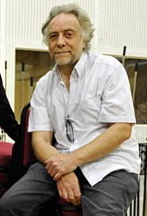 In 1999, a new stereo mix was put together at Abbey Road Studios by Peter Cobbin, Paul Hicks, Mirek Stiles and Allan Rouse for the album “Yellow Submarine Songtrack.” This vibrant stereo mix also eliminates John’s opening guitar chord but restores his answering line “life of ease” at the beginning of the final verse. All of the vocals are now centered in the mix to give a good balance. In 1999, a new stereo mix was put together at Abbey Road Studios by Peter Cobbin, Paul Hicks, Mirek Stiles and Allan Rouse for the album “Yellow Submarine Songtrack.” This vibrant stereo mix also eliminates John’s opening guitar chord but restores his answering line “life of ease” at the beginning of the final verse. All of the vocals are now centered in the mix to give a good balance.
An even newer stereo mix was made from the master tapes in 2015 by Giles Martin (son of George Martin) and Sam Okell in Abbey Road Studios. The purpose of this mix was for inclusion on the re-release of the compilation album "Beatles 1."
 Sometime during 2022, Giles Martin and engineer Sam Okell created yet another stereo mix of "Yellow Submarine" using AI technology used in Peter Jackson's "Get Back" series to separate the elements from the rhythm track for stereo placement, John's "life of ease" vocal in the final verse being highlighted. The results were phenomenal, this team also taking the time to create mixes of the Lennon demo (given to Giles by Sean Lennon) and the Lennon / McCartney demo from April of 1966, as well as "take four" as recorded on May 26th, 1966 and the final version with highlighted sound effects from June 1st, 1966. Sometime during 2022, Giles Martin and engineer Sam Okell created yet another stereo mix of "Yellow Submarine" using AI technology used in Peter Jackson's "Get Back" series to separate the elements from the rhythm track for stereo placement, John's "life of ease" vocal in the final verse being highlighted. The results were phenomenal, this team also taking the time to create mixes of the Lennon demo (given to Giles by Sean Lennon) and the Lennon / McCartney demo from April of 1966, as well as "take four" as recorded on May 26th, 1966 and the final version with highlighted sound effects from June 1st, 1966.
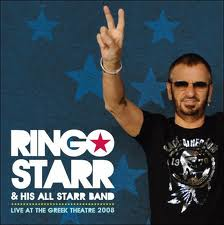 July 4th, 2003 saw a live recording of the song by Ringo that appeared on his “Tour 2003” album, and his performance on June 24th, 2005 at the Genessee Theatre in Waukegan, Illinois made it onto his album “Live At Soundstage.” Ringo's recording of the song as performed in Uncasville, Connecticut on July 16th, 2006 appeared on the album “Live 2006,” while Ringo's Los Angeles performance on August 2nd, 2008 came out on the album “Live At The Greek Theatre.” A few live recordings of “Yellow Submarine” were made throughout the years that appeared on albums by Ringo Starr. On July 13th, 1992, a recording of the song was made that appeared on the album “Live From Montreux.” June 25th, 1995 was the date of recording for his album “Ringo Starr And His Third All-Starr Band-Volume One.” Another live recording was made by Ringo on October 22nd, 2001 which ended up on the albums “King Biscuit Flower Hour Presents Ringo & His New All-Starr Band,” “Extended Versions,” and “Ringo Starr And Friends.” July 4th, 2003 saw a live recording of the song by Ringo that appeared on his “Tour 2003” album, and his performance on June 24th, 2005 at the Genessee Theatre in Waukegan, Illinois made it onto his album “Live At Soundstage.” Ringo's recording of the song as performed in Uncasville, Connecticut on July 16th, 2006 appeared on the album “Live 2006,” while Ringo's Los Angeles performance on August 2nd, 2008 came out on the album “Live At The Greek Theatre.” A few live recordings of “Yellow Submarine” were made throughout the years that appeared on albums by Ringo Starr. On July 13th, 1992, a recording of the song was made that appeared on the album “Live From Montreux.” June 25th, 1995 was the date of recording for his album “Ringo Starr And His Third All-Starr Band-Volume One.” Another live recording was made by Ringo on October 22nd, 2001 which ended up on the albums “King Biscuit Flower Hour Presents Ringo & His New All-Starr Band,” “Extended Versions,” and “Ringo Starr And Friends.”
Song Structure and Style
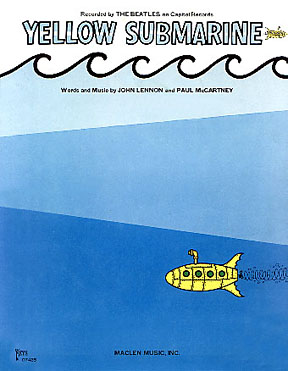 The Beatles' catalog once again veers ever more comfortably into their use of a chorus, something they didn’t use very much throughout their earlier career. The structure used in this song is ‘verse/ verse/ chorus/ verse/ chorus/ verse (instrumental)/ verse/ chorus/ chorus’ (or aababaabb). The Beatles' catalog once again veers ever more comfortably into their use of a chorus, something they didn’t use very much throughout their earlier career. The structure used in this song is ‘verse/ verse/ chorus/ verse/ chorus/ verse (instrumental)/ verse/ chorus/ chorus’ (or aababaabb).
A slightly out-of-key vocal from Ringo starts the song off without any instrumental accompaniment (unless you’re listening to the mono mix). An introductory vocal pick up like this one has been used at times by the group, “All My Loving,” “Can’t Buy Me Love” and “It Won’t Be Long” are a few that readily come to mind. The actual downbeat of the first eight-measure verse begins on the word “town” with John on guitar and Paul (subtly) on bass with George rattling a tambourine throughout the verse. Ringo comes in with some strategic bass drum beats to add some seasoning from the fifth measure on.
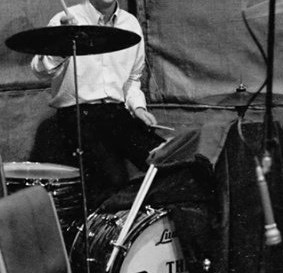 The second eight-measure verse begins immediately after, with Ringo pounding the bass drum on even quarter notes while wave sound effects permeate the recording to create the atmosphere of the story being told. The word “submarine” appears to be clipped off prematurely in the eighth measure, possibly the result of an early punch in for the harmony vocals that enter shortly after in the first chorus. The second eight-measure verse begins immediately after, with Ringo pounding the bass drum on even quarter notes while wave sound effects permeate the recording to create the atmosphere of the story being told. The word “submarine” appears to be clipped off prematurely in the eighth measure, possibly the result of an early punch in for the harmony vocals that enter shortly after in the first chorus.
 The chorus is also eight measures long and is characterized by the childlike sing-a-long nature of the four-note melody line harmonized by all four Beatles. Ringo here begins a steady 4/4 drum beat for the first time with heavy snare-drum accents. The wave sound effects are also still prominent in the mix. The chorus is also eight measures long and is characterized by the childlike sing-a-long nature of the four-note melody line harmonized by all four Beatles. Ringo here begins a steady 4/4 drum beat for the first time with heavy snare-drum accents. The wave sound effects are also still prominent in the mix.
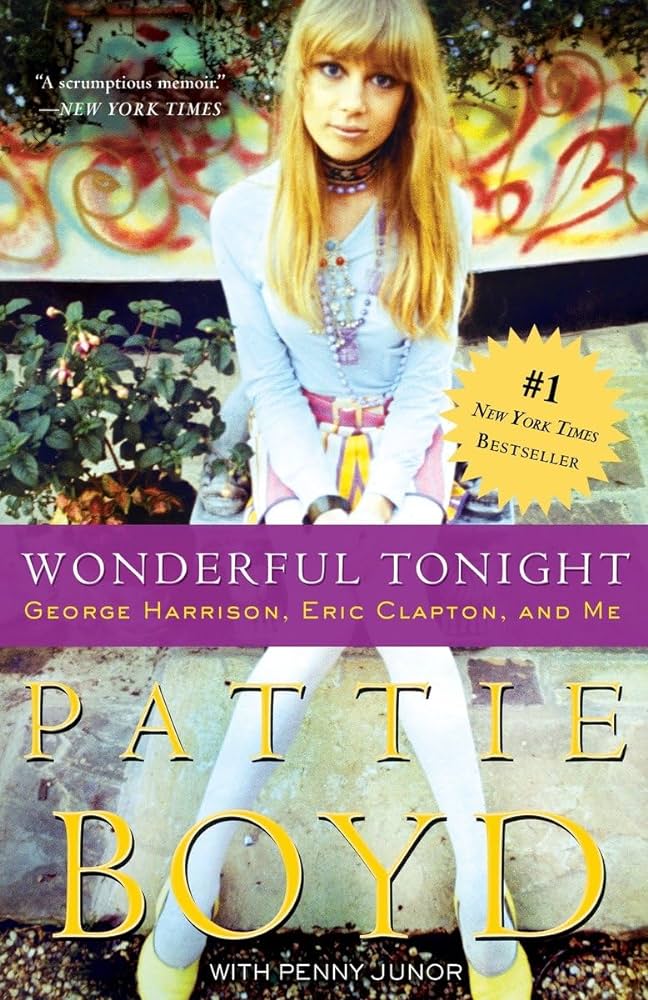 The eight-measure third verse is formatted quite similarly although it contains some differences in the arrangement and structure. More notably, a crowd noise prominently appears to verify the line “and our friends are all aboard,” with Pattie (Boyd) Harrison’s shrieking coming through loud and clear. To accentuate the lyric “and the band begins to play,” the found Krier / Helmer march fills the gap they left in the seventh and eighth measures of the verse. If you listen carefully to John’s rhythm guitar in the rhythm track, he continues to play the chord changes heard in the other verses during those measures, but since the brass band recording is strictly in the key of G major, the impression is that those measures were meant to break the usual chord pattern of the other verses. This, of course, just happened to work out that way. The eight-measure third verse is formatted quite similarly although it contains some differences in the arrangement and structure. More notably, a crowd noise prominently appears to verify the line “and our friends are all aboard,” with Pattie (Boyd) Harrison’s shrieking coming through loud and clear. To accentuate the lyric “and the band begins to play,” the found Krier / Helmer march fills the gap they left in the seventh and eighth measures of the verse. If you listen carefully to John’s rhythm guitar in the rhythm track, he continues to play the chord changes heard in the other verses during those measures, but since the brass band recording is strictly in the key of G major, the impression is that those measures were meant to break the usual chord pattern of the other verses. This, of course, just happened to work out that way.
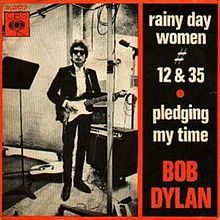 Many writers, such as Ian MacDonald in “Revolution In The Head,” have noted the uncanny similarities here with Bob Dylan’s “Rainy Day Women #12 & 35” (aka “Everybody Must Get Stoned”), not only because of the similar slow shuffle beat but the laughing party atmosphere and the brass band. Being the huge Dylan fans that The Beatles were, they could very well have had this in mind when putting the arrangement together, feasibly so since this Dylan single was just released the month before and no doubt got due attention from John and Paul. Many writers, such as Ian MacDonald in “Revolution In The Head,” have noted the uncanny similarities here with Bob Dylan’s “Rainy Day Women #12 & 35” (aka “Everybody Must Get Stoned”), not only because of the similar slow shuffle beat but the laughing party atmosphere and the brass band. Being the huge Dylan fans that The Beatles were, they could very well have had this in mind when putting the arrangement together, feasibly so since this Dylan single was just released the month before and no doubt got due attention from John and Paul.
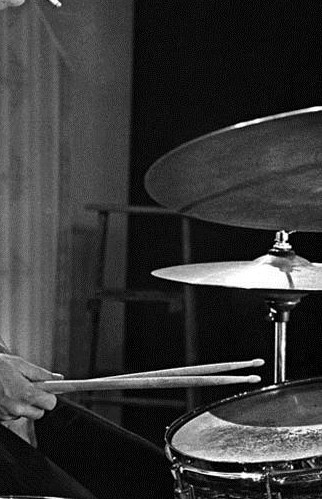 As the brass band recording quickly fades into the distance a second eight-measure chorus is heard, which is identical in form to the first with the addition of Ringo tapping his drumsticks to the beat on the harmony vocal track. This is followed by the instrumental verse which is not filled with a solo instrument at all, but an elaborate set of sound effects (live as well as from the EMI library) and submarine crew voices, which appropriately paint a very vivid portrait to accompany the storyline. As the brass band recording quickly fades into the distance a second eight-measure chorus is heard, which is identical in form to the first with the addition of Ringo tapping his drumsticks to the beat on the harmony vocal track. This is followed by the instrumental verse which is not filled with a solo instrument at all, but an elaborate set of sound effects (live as well as from the EMI library) and submarine crew voices, which appropriately paint a very vivid portrait to accompany the storyline.
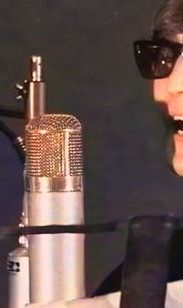 The fourth and final verse now appears, which peels away all of the atmospheric sounds to reveal Ringo completing his story on top of the simple acoustic-based rhythm track. Lennon adds some exciting comic relief by repeating most of the lead singer’s lines as if over the subs’ squawk box, ending with an enthusiastic “a-ha” just after hearing Ringo enunciate what sounds like the word “slubmarine.” The fourth and final verse now appears, which peels away all of the atmospheric sounds to reveal Ringo completing his story on top of the simple acoustic-based rhythm track. Lennon adds some exciting comic relief by repeating most of the lead singer’s lines as if over the subs’ squawk box, ending with an enthusiastic “a-ha” just after hearing Ringo enunciate what sounds like the word “slubmarine.”
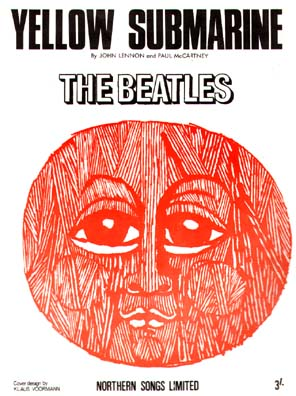 What follows next is the true pay-off, or climax, of the song, this being a twice-repeated reprise of the chorus with a pounding bass drum played on all quarter notes but not starting until the second measure of the first chorus. Along with this is a rousing, predominantly male, choir of vocalists belting out the hypnotic and repetitious lines of the chorus mostly in unison. The song fades out just as the final measure of the second chorus is complete. The overall first impression to the listener was probably one of shock but amusement. Nobody had ever heard The Beatles like this before! What follows next is the true pay-off, or climax, of the song, this being a twice-repeated reprise of the chorus with a pounding bass drum played on all quarter notes but not starting until the second measure of the first chorus. Along with this is a rousing, predominantly male, choir of vocalists belting out the hypnotic and repetitious lines of the chorus mostly in unison. The song fades out just as the final measure of the second chorus is complete. The overall first impression to the listener was probably one of shock but amusement. Nobody had ever heard The Beatles like this before!
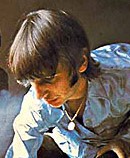 Ringo, of course, takes center stage on this track, his sometimes off-key vocals only adding to the charm of the song. With him coming in on the top of most “favorite Beatle” lists in America, young fans in that country were undoubtedly pleased to finally have a Ringo lead vocal track that was of a superior quality to do him justice – one that was suited perfectly to his persona. And while his drumming was relatively simple, Ringo's subdued expertise suited the feel of the song appropriately. Ringo, of course, takes center stage on this track, his sometimes off-key vocals only adding to the charm of the song. With him coming in on the top of most “favorite Beatle” lists in America, young fans in that country were undoubtedly pleased to finally have a Ringo lead vocal track that was of a superior quality to do him justice – one that was suited perfectly to his persona. And while his drumming was relatively simple, Ringo's subdued expertise suited the feel of the song appropriately.
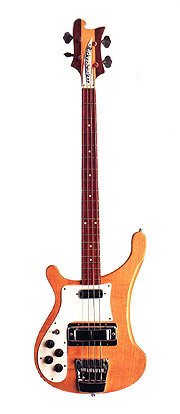 Lennon chunks away at rhythm guitar all through the song, this being the only actual thread holding the framework of the song in place instrumentally. His harmony vocals, and especially his comedic vocal touches, show he was well involved and enthused with "Paul song," as he described it. Paul uncharacteristically takes somewhat of a backseat in the proceedings here, playing a rather subdued bass guitar in the rhythm track while adding to the harmonies as well as the extra voices and sound effects in the instrumental section. Harrison is the least involved Beatle, the tambourine being the only instrument he plays, although his presence is indeed felt in the harmony work and probably with the occasional sound effect. Lennon chunks away at rhythm guitar all through the song, this being the only actual thread holding the framework of the song in place instrumentally. His harmony vocals, and especially his comedic vocal touches, show he was well involved and enthused with "Paul song," as he described it. Paul uncharacteristically takes somewhat of a backseat in the proceedings here, playing a rather subdued bass guitar in the rhythm track while adding to the harmonies as well as the extra voices and sound effects in the instrumental section. Harrison is the least involved Beatle, the tambourine being the only instrument he plays, although his presence is indeed felt in the harmony work and probably with the occasional sound effect.
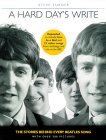 As Paul once explained: “People say, ‘Yellow Submarine’? What’s the significance? What’s behind it?’ Nothing! I knew it would get connotations, but it was just a children’s song.” In “A Hard Day’s Write,” author Steve Turner writes: “The rumor quickly spread that 'yellow submarine' was a veiled reference to drugs. In New York, Nembutal capsules started to be known as ‘yellow submarines.’ McCartney denied the allegations.” As Paul once explained: “People say, ‘Yellow Submarine’? What’s the significance? What’s behind it?’ Nothing! I knew it would get connotations, but it was just a children’s song.” In “A Hard Day’s Write,” author Steve Turner writes: “The rumor quickly spread that 'yellow submarine' was a veiled reference to drugs. In New York, Nembutal capsules started to be known as ‘yellow submarines.’ McCartney denied the allegations.”
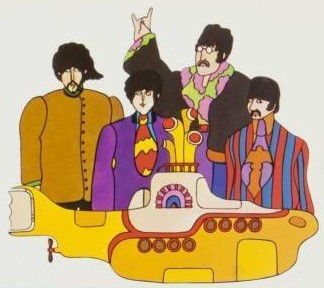 The simple story appears to be told here by an older person, possibly a father talking to his children, about how when he was younger there was “a man who sailed to sea” that lived back in his hometown who described to him and his other young friends about how he had lived “in the land of submarines.” This man then proceeded to “sail” with the young boy (the narrator) in a ship searching for “the sea of green” where they then somehow submerged to “live beneath the waves” and take up residence for an undetermined amount of time in a “yellow submarine.” The simple story appears to be told here by an older person, possibly a father talking to his children, about how when he was younger there was “a man who sailed to sea” that lived back in his hometown who described to him and his other young friends about how he had lived “in the land of submarines.” This man then proceeded to “sail” with the young boy (the narrator) in a ship searching for “the sea of green” where they then somehow submerged to “live beneath the waves” and take up residence for an undetermined amount of time in a “yellow submarine.”
 They were not alone though. “Our friends were all aboard,” he relates, “many more of them lived next door,” no doubt in a different colored sub. Their vessel was also large enough to house a marching “band” that played as they “lived a life of ease,” not for want of anything. After all, who would need anything more than the serenity of enjoying a “sky of blue and sea of green”? They were not alone though. “Our friends were all aboard,” he relates, “many more of them lived next door,” no doubt in a different colored sub. Their vessel was also large enough to house a marching “band” that played as they “lived a life of ease,” not for want of anything. After all, who would need anything more than the serenity of enjoying a “sky of blue and sea of green”?
American Releases
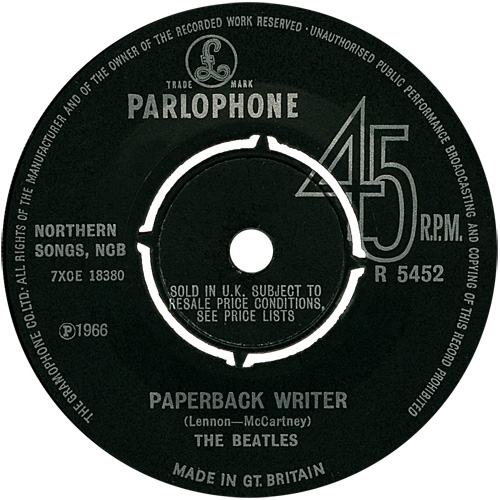 “Yellow Submarine” was released internationally as a single, but that wasn’t always the plan. “The decision was Brian’s alone,” stated Paul in 1966 in reference to their manager Brian Epstein. "It wasn’t really scheduled for release, but Brian (Epstein) thought the best two tracks should be made into a single before anyone else could cover them." Because Donovan was partially involved in the composition of the song and privy to its recording, his producer Micky Most stated in July of 1966 in "Disc and Music Echo" that "he thought it would be a good number for The She Trinity," and planned for their release of the song a week before "Revolver" was set to be released. This was thwarted by The Beatles' release of the single in the UK on August 5th, 1966, putting aside thier usual practice of releasing singles apart from thir album tracks, as had been done on June 10th, 1966 with the UK release of the "Paperback Writer / Rain" single. “Yellow Submarine” was released internationally as a single, but that wasn’t always the plan. “The decision was Brian’s alone,” stated Paul in 1966 in reference to their manager Brian Epstein. "It wasn’t really scheduled for release, but Brian (Epstein) thought the best two tracks should be made into a single before anyone else could cover them." Because Donovan was partially involved in the composition of the song and privy to its recording, his producer Micky Most stated in July of 1966 in "Disc and Music Echo" that "he thought it would be a good number for The She Trinity," and planned for their release of the song a week before "Revolver" was set to be released. This was thwarted by The Beatles' release of the single in the UK on August 5th, 1966, putting aside thier usual practice of releasing singles apart from thir album tracks, as had been done on June 10th, 1966 with the UK release of the "Paperback Writer / Rain" single.
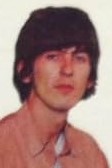 George Harrison agreed: “We just thought that we may as well put it out instead of sitting back and seeing dozens of cover versions all getting hits. We might as well cop a hit as well as anybody else…It’s a good commercial single.” Ringo explained: “It was made originally just for the LP. But then, Brian and our recording manager, and people like that, were talking to us and they thought that ‘Yellow Submarine’ was commercial and they wanted to release it as a single.” George Harrison agreed: “We just thought that we may as well put it out instead of sitting back and seeing dozens of cover versions all getting hits. We might as well cop a hit as well as anybody else…It’s a good commercial single.” Ringo explained: “It was made originally just for the LP. But then, Brian and our recording manager, and people like that, were talking to us and they thought that ‘Yellow Submarine’ was commercial and they wanted to release it as a single.”
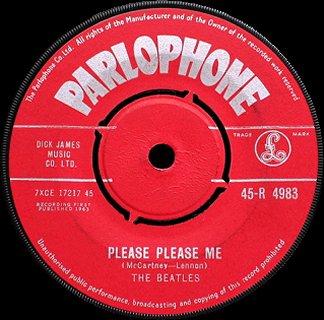 It was standard practice in Britain not to release singles from British albums but instead to release a single simultaneous to the album that contained non-album tracks, which explains the comment from Ringo from 1966 that it “was the first time we have released anything off an LP as a single.” While this wasn’t exactly true (as with “Please Please Me,” “A Hard Day’s Night” and “Help!”), it did break away from the usual British album tradition of the time. It was standard practice in Britain not to release singles from British albums but instead to release a single simultaneous to the album that contained non-album tracks, which explains the comment from Ringo from 1966 that it “was the first time we have released anything off an LP as a single.” While this wasn’t exactly true (as with “Please Please Me,” “A Hard Day’s Night” and “Help!”), it did break away from the usual British album tradition of the time.
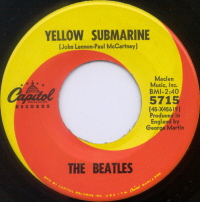 Capitol Records released "Yellow Submarine" as a single on August 8th, 1966, with “Eleanor Rigby” as the hit b-side, simultaneously with the “Revolver” album that contained both songs. Being that they felt strongly about both tracks, it was promoted as a “double a-side” single in the UK, while “Yellow Submarine” was the obvious bigger hit in America, peaking at #2 on the US Billboard Hot 100 while “Eleanor Rigby” climbed to #11. Capitol Records released "Yellow Submarine" as a single on August 8th, 1966, with “Eleanor Rigby” as the hit b-side, simultaneously with the “Revolver” album that contained both songs. Being that they felt strongly about both tracks, it was promoted as a “double a-side” single in the UK, while “Yellow Submarine” was the obvious bigger hit in America, peaking at #2 on the US Billboard Hot 100 while “Eleanor Rigby” climbed to #11.
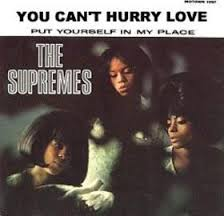 Speculation exists as to why the song did not reach #1 on the Billboard chart, being that it did easily sell over a million copies at the time. Rumor has it that, because of John Lennon's “We’re more popular than Jesus” quote, or possibly because of the furor that arose from the original "butcher cover" contained on their “Yesterday…And Today” released earlier that year, Billboard held it off of the top spot in favor of The Supremes “You Can’t Hurry Love.” Any way you look at it, a million-selling #2 single wasn't anything to get upset over. Noteworthy also is the fact that both Cash Box and Record World, the two other substantial music charts of the time, placed the song at #1 on their charts. Speculation exists as to why the song did not reach #1 on the Billboard chart, being that it did easily sell over a million copies at the time. Rumor has it that, because of John Lennon's “We’re more popular than Jesus” quote, or possibly because of the furor that arose from the original "butcher cover" contained on their “Yesterday…And Today” released earlier that year, Billboard held it off of the top spot in favor of The Supremes “You Can’t Hurry Love.” Any way you look at it, a million-selling #2 single wasn't anything to get upset over. Noteworthy also is the fact that both Cash Box and Record World, the two other substantial music charts of the time, placed the song at #1 on their charts.
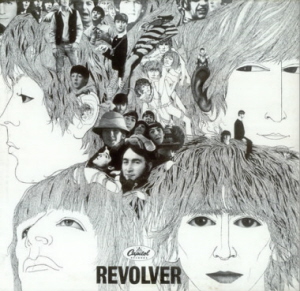 As stated above, the “Revolver” album was also released in America on August 8th, 1966. Positioned after the beautiful “Here, There And Everywhere,” it punctures the mood to great effect, showing more than ever that the group was capable of just about anything and doing it all well. This American version of the "Revolver" album got a compact disc release on January 21st, 2014, with both the mono and stereo versions contained on a single CD. As stated above, the “Revolver” album was also released in America on August 8th, 1966. Positioned after the beautiful “Here, There And Everywhere,” it punctures the mood to great effect, showing more than ever that the group was capable of just about anything and doing it all well. This American version of the "Revolver" album got a compact disc release on January 21st, 2014, with both the mono and stereo versions contained on a single CD.
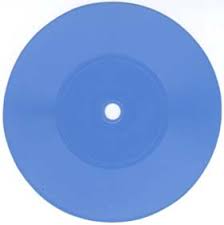 Sometime toward the end of 1966, a new single format was being tested called "Pocket Discs," which were 3.75" flexible discs that could be carried "on the go" (as the manufacturers claimed) in your pocket until you got to a friends house or somewhere that had a record player. They were manufactured by Americom with licenses from record labels, such as Capitol, to distribute new releases in this alternate format. Test pressings were created of the Beatles' single "Yellow Submarine / Eleanor Rigby" on either light blue or red flexible vinyl but none were sold to the general public. Collectors today will pay thousands of dollars for an existing copy. Sometime toward the end of 1966, a new single format was being tested called "Pocket Discs," which were 3.75" flexible discs that could be carried "on the go" (as the manufacturers claimed) in your pocket until you got to a friends house or somewhere that had a record player. They were manufactured by Americom with licenses from record labels, such as Capitol, to distribute new releases in this alternate format. Test pressings were created of the Beatles' single "Yellow Submarine / Eleanor Rigby" on either light blue or red flexible vinyl but none were sold to the general public. Collectors today will pay thousands of dollars for an existing copy.
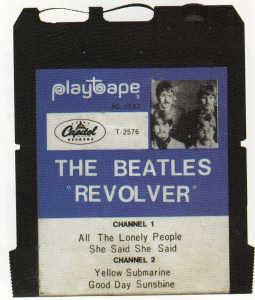 Sometime during 1967, Capitol released Beatles music on another brand new but short-lived format called "Playtapes." These tape cartridges did not have the capability to include entire albums, so two four-song versions of "Revolver" were released in this portable format, "Yellow Submarine" being on one of them. These "Playtapes" are very hard to find and highly collectable today. Sometime during 1967, Capitol released Beatles music on another brand new but short-lived format called "Playtapes." These tape cartridges did not have the capability to include entire albums, so two four-song versions of "Revolver" were released in this portable format, "Yellow Submarine" being on one of them. These "Playtapes" are very hard to find and highly collectable today.
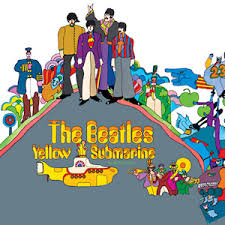 With the song “Yellow Submarine” being chosen as the subject matter and title of the group's animated film project for United Artists, the soundtrack album of the same name obviously opened with the song. This January 13th, 1969 release peaked at #2 on the Billboard album chart, being kept from the top spot by their own double-album “The Beatles” (aka “The White Album”) which was released two months prior. The album appeared on compact disc for the first time on August 25th, 1987, the remastered version being released on CD on September 9th, 2009 and on vinyl on Novembe 13th, 2012. With the song “Yellow Submarine” being chosen as the subject matter and title of the group's animated film project for United Artists, the soundtrack album of the same name obviously opened with the song. This January 13th, 1969 release peaked at #2 on the Billboard album chart, being kept from the top spot by their own double-album “The Beatles” (aka “The White Album”) which was released two months prior. The album appeared on compact disc for the first time on August 25th, 1987, the remastered version being released on CD on September 9th, 2009 and on vinyl on Novembe 13th, 2012.
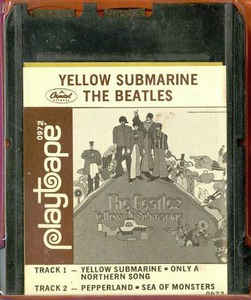 Capitol Records also released a "Playtape" version of the "Yellow Submarine" soundtrack album sometime in 1969, the title track being among the four songs included on this release. This was the final Beatles "Playtape" release, the format being discontinued shortly thereafter. Capitol Records also released a "Playtape" version of the "Yellow Submarine" soundtrack album sometime in 1969, the title track being among the four songs included on this release. This was the final Beatles "Playtape" release, the format being discontinued shortly thereafter.
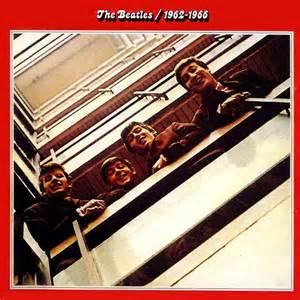 On April 2nd, 1973, “Yellow Submarine” was included as an appropriate final track on their first official compilation album, the double LP “The Beatles/1962-1966” (aka “The Red Album”). This was first released on CD on October 5th, 1993 and then again in a newly remastered set on CD on October 19th, 2010 and on vinyl on October 31st, 2014. On April 2nd, 1973, “Yellow Submarine” was included as an appropriate final track on their first official compilation album, the double LP “The Beatles/1962-1966” (aka “The Red Album”). This was first released on CD on October 5th, 1993 and then again in a newly remastered set on CD on October 19th, 2010 and on vinyl on October 31st, 2014.
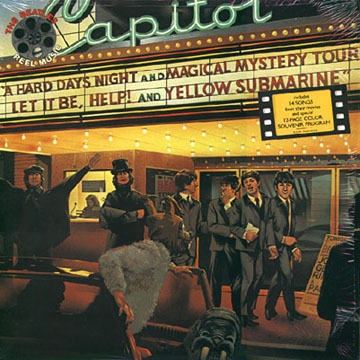 A compilation album entitled “Reel Music” was released on March 22nd, 1982, which featured highlighted songs from The Beatles' films. The song “Yellow Submarine” was an obvious contender here, the album peaking at #19 on the US Billboard album chart. Over 12,000 promo copies were also printed, these being on translucent gold vinyl. A compilation album entitled “Reel Music” was released on March 22nd, 1982, which featured highlighted songs from The Beatles' films. The song “Yellow Submarine” was an obvious contender here, the album peaking at #19 on the US Billboard album chart. Over 12,000 promo copies were also printed, these being on translucent gold vinyl.
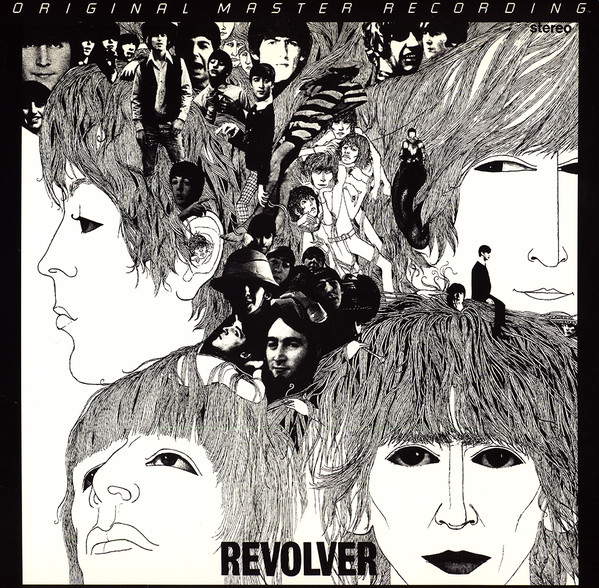 The first time the original British "Revolver” album was made available in America was on the "Original Master Recording" vinyl edition released through Mobile Fidelity Sound Lab sometime in 1985. This album included "Yellow Submarine" and was prepared utilizing half-speed mastering technology from the original master tape on loan from EMI. This version of the album was only available for a short time and is quite collectible today. The first time the original British "Revolver” album was made available in America was on the "Original Master Recording" vinyl edition released through Mobile Fidelity Sound Lab sometime in 1985. This album included "Yellow Submarine" and was prepared utilizing half-speed mastering technology from the original master tape on loan from EMI. This version of the album was only available for a short time and is quite collectible today.
In November of 1986, the “Yellow Submarine” soundtrack album was also made available as an “Original Master Recording” release by Mobile Fidelity Sound Lab, which included the song “Yellow Submarine.” The original master tape from EMI was used for this limited edition release, which is also hard to find today.
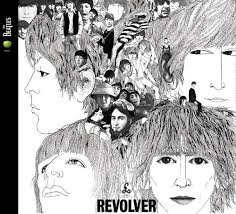 When the full 14-track British “Revolver” album was released on compact disc on April 30th, 1987, the vinyl edition coming out on July 21st, 1987, America finally got to hear the album with the original track listing as intended. The album was then remastered and re-released on compact disc on September 9th, 2009 and on vinyl on November 13th, 2012. Then, a newly mixed edition of "Revolver" created by Giles Martin was released on vinyl and CD on October 28th, 2022. When the full 14-track British “Revolver” album was released on compact disc on April 30th, 1987, the vinyl edition coming out on July 21st, 1987, America finally got to hear the album with the original track listing as intended. The album was then remastered and re-released on compact disc on September 9th, 2009 and on vinyl on November 13th, 2012. Then, a newly mixed edition of "Revolver" created by Giles Martin was released on vinyl and CD on October 28th, 2022.
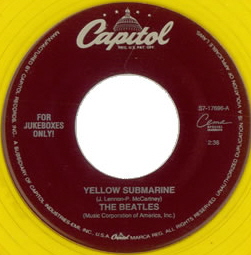 In February of 1994, Capitol re-released the “Yellow Submarine / Eleanor Ribgy” 45 on the Cema series “For Jukeboxes Only” label. The obvious vinyl color choice for this release was yellow, this being quite the collectors’ item today. In February of 1994, Capitol re-released the “Yellow Submarine / Eleanor Ribgy” 45 on the Cema series “For Jukeboxes Only” label. The obvious vinyl color choice for this release was yellow, this being quite the collectors’ item today.
On March 4th, 1996, the compact disc single for the new Beatles track “Real Love” was released which featured the re-worked mix of “Yellow Submarine” as a bonus track. A good portion of the aborted introduction was tacked on to the beginning as were assorted sound effects not heard on the original version.
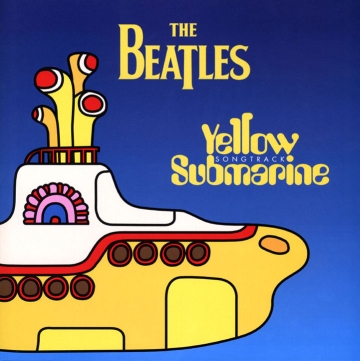 September 13th, 1999 was the release date for the album “Yellow Submarine Songtrack,” which was put together to correspond to the re-release of the movie on VHS and DVD. All of The Beatles songs featured in the film were not only included on this new album, but they all were treated to an excellent new stereo mix, the song “Yellow Submarine” sounding better than ever. The new mix of this song was also featured on the promotional sampler of this album, which was released simultaneously. September 13th, 1999 was the release date for the album “Yellow Submarine Songtrack,” which was put together to correspond to the re-release of the movie on VHS and DVD. All of The Beatles songs featured in the film were not only included on this new album, but they all were treated to an excellent new stereo mix, the song “Yellow Submarine” sounding better than ever. The new mix of this song was also featured on the promotional sampler of this album, which was released simultaneously.
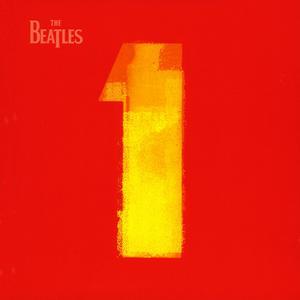 “Beatles 1” was the next released Beatles' compilation album to feature "Yellow Submarine," this single disc “greatest hits” compilation being released on November 13th, 2000. This song may not have officially reached #1 on the US Billboard Hot 100, but since it had reached the summit in Britain, it earned its spot on this highly successful release (over 11 million copies sold in America and 31 million worldwide). A remastered version of this album was released in September of 2011 and a newly mixed version was released on November 6th, 2015. “Beatles 1” was the next released Beatles' compilation album to feature "Yellow Submarine," this single disc “greatest hits” compilation being released on November 13th, 2000. This song may not have officially reached #1 on the US Billboard Hot 100, but since it had reached the summit in Britain, it earned its spot on this highly successful release (over 11 million copies sold in America and 31 million worldwide). A remastered version of this album was released in September of 2011 and a newly mixed version was released on November 6th, 2015.
 The CD box set “The Beatles In Mono” came out on September 9th, 2009, this including the original 1966 mono mix of “Yellow Submarine” but in a vibrant remastered condition. The vinyl edition of this box set was first released on September 9th, 2014. The CD box set “The Beatles In Mono” came out on September 9th, 2009, this including the original 1966 mono mix of “Yellow Submarine” but in a vibrant remastered condition. The vinyl edition of this box set was first released on September 9th, 2014.
The "Yellow Submarine / Eleanor Rigby" single was re-released on July 6th, 2018 as a limited edition picture disc to celebrate the 50th Anniversary of the original release of the legendary animated movie.
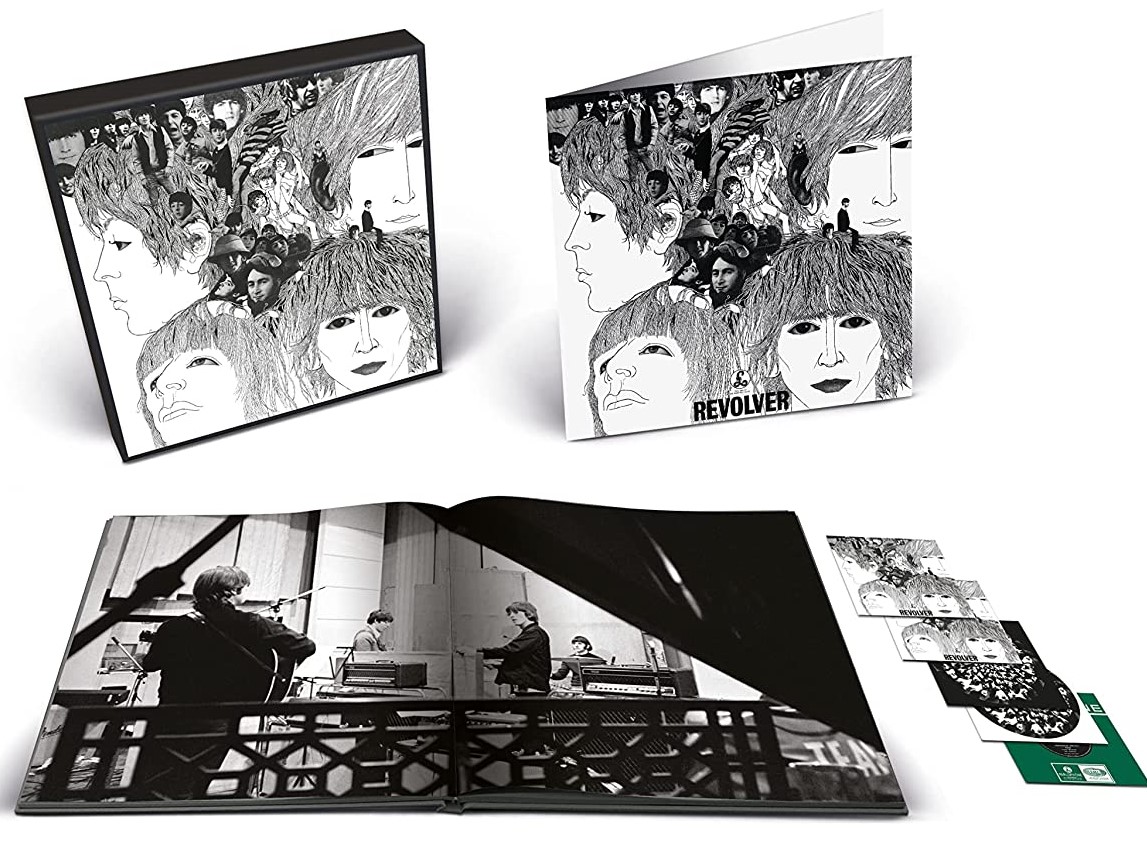 Then on October 28th, 2022, various new editions of the 14 track “Revolver” album were released that feature the amazing new stereo mix by Giles Martin. The “Special Edition Deluxe 2CD Set” features “Yellow Submarine” in its new stereo mix as well as “'take 4' before sound effects” from the 1966 session tapes. The “Deluxe Edition,” which is available as a 5 CD box set and a 4LP / 1 EP box set, includes these versions as well as a songwriting work tape from John, a songwriting work tape from John and Paul, a highlighted sound effects version (as included in "Anthology 2") and the original mono master from 1966. The 2022 Giles Martin stereo mix of the album was also made available for the first time as a vinyl picture disc for a limited time. Then on October 28th, 2022, various new editions of the 14 track “Revolver” album were released that feature the amazing new stereo mix by Giles Martin. The “Special Edition Deluxe 2CD Set” features “Yellow Submarine” in its new stereo mix as well as “'take 4' before sound effects” from the 1966 session tapes. The “Deluxe Edition,” which is available as a 5 CD box set and a 4LP / 1 EP box set, includes these versions as well as a songwriting work tape from John, a songwriting work tape from John and Paul, a highlighted sound effects version (as included in "Anthology 2") and the original mono master from 1966. The 2022 Giles Martin stereo mix of the album was also made available for the first time as a vinyl picture disc for a limited time.
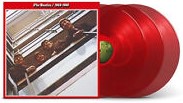 A new 50th Anniversay edition of the compilation album "The Beatles / 1962 - 1966" ("The Red Album") was released on November 10th, 2023, the excellent Giles Martin stereo mix of "Yellow Submarine," as detailed above, being included. This expanded set included 12 additional songs for a total of 38 tracks, and was made available as a double CD and as a triple vinyl release on both black and red vinyl. A new 50th Anniversay edition of the compilation album "The Beatles / 1962 - 1966" ("The Red Album") was released on November 10th, 2023, the excellent Giles Martin stereo mix of "Yellow Submarine," as detailed above, being included. This expanded set included 12 additional songs for a total of 38 tracks, and was made available as a double CD and as a triple vinyl release on both black and red vinyl.
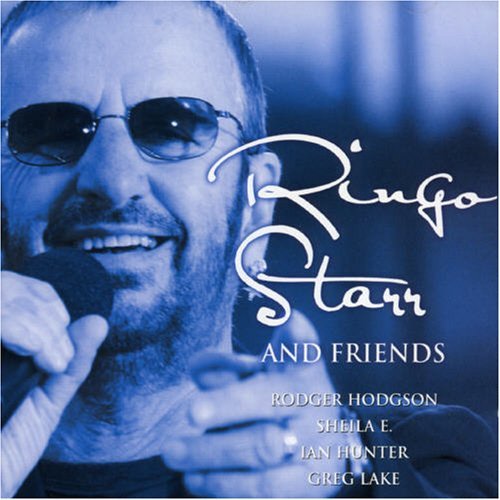 As detailed above, a number of Ringo Starr live albums also featured the song, these including “Live From Montreux” (released September 13th, 1993), "4-Starr Collection" (EP release in 1995), “Ringo Starr And His Third All-Starr Band-Volume One” (coming out on August 12th, 1997), “King Biscuit Flower Hour Presents Ringo & His New All-Starr Band” (released August 6th, 2002), “Extended Versions” (released June 1st, 2003), “Tour 2003” (coming out on March 23rd, 2004), “Ringo Starr And Friends” (released August 15th, 2006), “Live At Soundstage” (released October 23rd, 2007), “Live 2006” (released July 7th, 2008) and “Live At The Greek Theatre” (released July 27th, 2010). The song was also included in the 2CD set "Live At The Greek Theatre 2019," which was released on November 25th, 2022, this also being released on a 2CD/Blu-Ray set that same day. As detailed above, a number of Ringo Starr live albums also featured the song, these including “Live From Montreux” (released September 13th, 1993), "4-Starr Collection" (EP release in 1995), “Ringo Starr And His Third All-Starr Band-Volume One” (coming out on August 12th, 1997), “King Biscuit Flower Hour Presents Ringo & His New All-Starr Band” (released August 6th, 2002), “Extended Versions” (released June 1st, 2003), “Tour 2003” (coming out on March 23rd, 2004), “Ringo Starr And Friends” (released August 15th, 2006), “Live At Soundstage” (released October 23rd, 2007), “Live 2006” (released July 7th, 2008) and “Live At The Greek Theatre” (released July 27th, 2010). The song was also included in the 2CD set "Live At The Greek Theatre 2019," which was released on November 25th, 2022, this also being released on a 2CD/Blu-Ray set that same day.
Live Performances
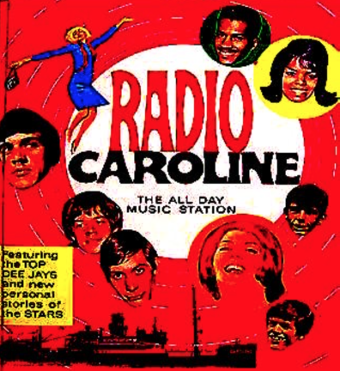 Compiling a record of concert performances pertaining to the song “Yellow Submarine” was remarkably easy. The Beatles never performed it live as a group, although Lennon said he wished they could have. At a Press Conference in Cleveland, Ohio, just before their August 14th, 1966 performance there, John explained to Radio Caroline DJ Ken Douglas why they couldn't reproduce any songs from their new "Revolver" album onstage: "We'd like to do 'Yellow Submarine' and everything. Maybe we can get some of those effects if I stick my foot in a bucket and kick it around or something!" But, of course, this was never to be. Compiling a record of concert performances pertaining to the song “Yellow Submarine” was remarkably easy. The Beatles never performed it live as a group, although Lennon said he wished they could have. At a Press Conference in Cleveland, Ohio, just before their August 14th, 1966 performance there, John explained to Radio Caroline DJ Ken Douglas why they couldn't reproduce any songs from their new "Revolver" album onstage: "We'd like to do 'Yellow Submarine' and everything. Maybe we can get some of those effects if I stick my foot in a bucket and kick it around or something!" But, of course, this was never to be.
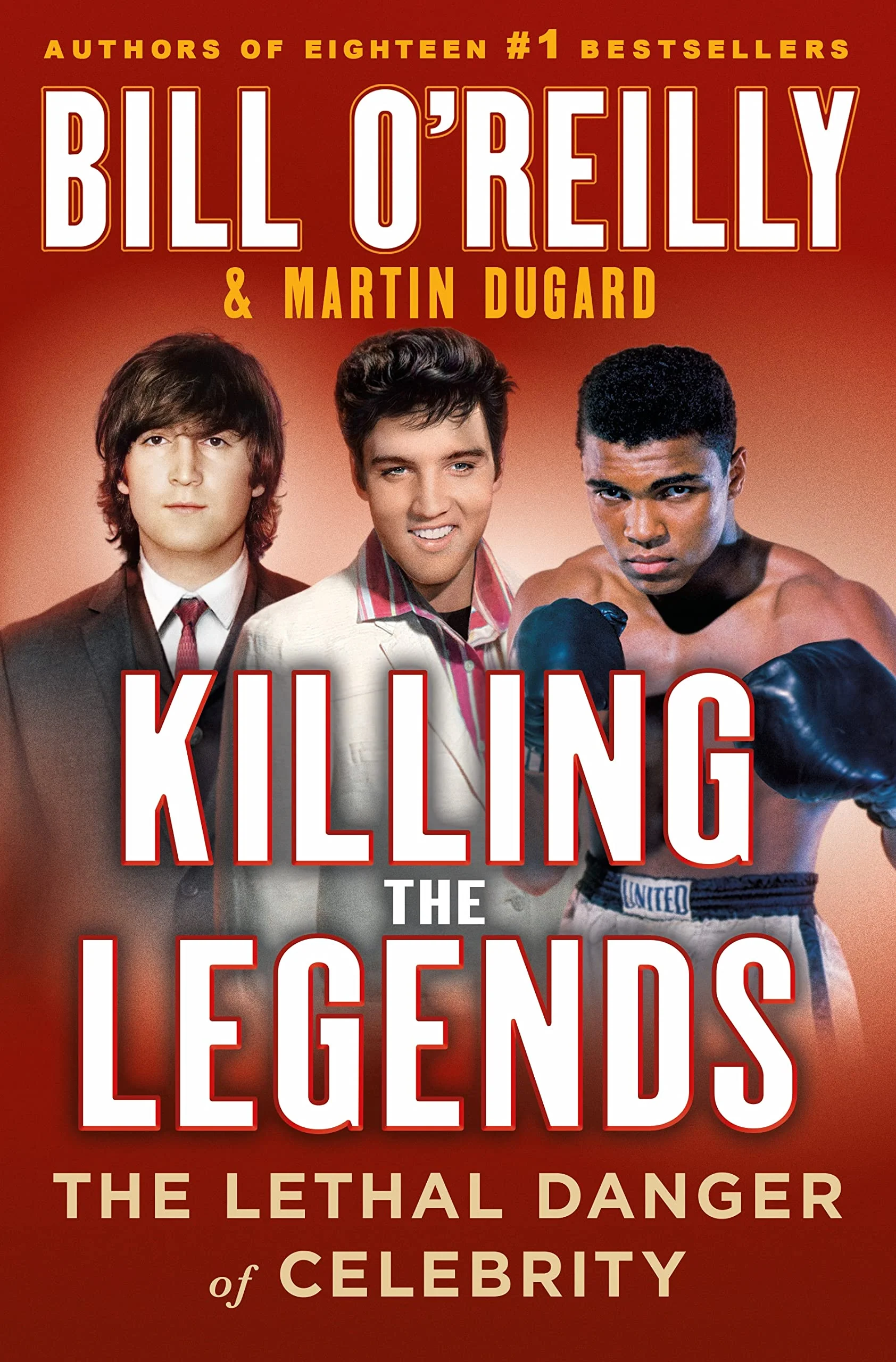 Interestingly, there was one occasion that John and Ringo performed the song together. This occurred in the evening of October 9th, 1971 at the Hotel Syracuse in Syracuse, New York, this being a surprise party arranged by Yoko Ono for Lennon's 31st birthday. According to Bill O'Reilly and Martin Dugard's book "Killing The Legends: The Lethal Danger Of Celebrity," "Ringo Starr is here. So is Eric Clapton, along with several other musicians. After Lennon is presented with a guitar-shaped birthday cake, a fourty-five-minute jam session breaks out in the hotel suite. Ringo taps out rhythm on an overturned trash can as the guiar players launch into standards like 'Peggy Sue' and even The Beatles' 'Yellow Submarine.'" Interestingly, there was one occasion that John and Ringo performed the song together. This occurred in the evening of October 9th, 1971 at the Hotel Syracuse in Syracuse, New York, this being a surprise party arranged by Yoko Ono for Lennon's 31st birthday. According to Bill O'Reilly and Martin Dugard's book "Killing The Legends: The Lethal Danger Of Celebrity," "Ringo Starr is here. So is Eric Clapton, along with several other musicians. After Lennon is presented with a guitar-shaped birthday cake, a fourty-five-minute jam session breaks out in the hotel suite. Ringo taps out rhythm on an overturned trash can as the guiar players launch into standards like 'Peggy Sue' and even The Beatles' 'Yellow Submarine.'"
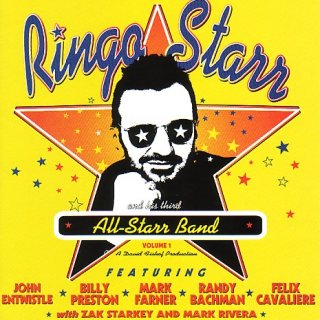 Understandably, Ringo has performed the song on every tour he’s been on since the breakup of The Beatles. From his first "All-Starr Band" tour in 1989 throughout his entire live solo career, this song has been an expected showcase at every venue he’s ever played. Understandably, Ringo has performed the song on every tour he’s been on since the breakup of The Beatles. From his first "All-Starr Band" tour in 1989 throughout his entire live solo career, this song has been an expected showcase at every venue he’s ever played.
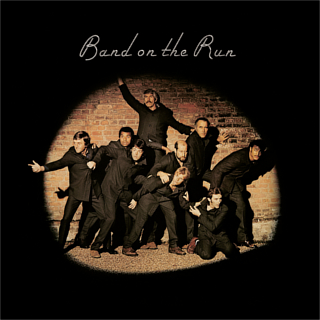 Astonishingly, McCartney even performed quick impromptu versions of the song on a few occasions. On the British radio show “Pete and Geoff Breakfast Show” on September 9th, 2005, he ran through a quick rendition of the song. Then, during his “On The Run” tour of 2011/2012, Paul and his band performed a minute-long version of the song at three stops on the tour (Rotterdam, Antwerp and Florianopolis) as a quick segue into the song “Band On The Run.” Astonishingly, McCartney even performed quick impromptu versions of the song on a few occasions. On the British radio show “Pete and Geoff Breakfast Show” on September 9th, 2005, he ran through a quick rendition of the song. Then, during his “On The Run” tour of 2011/2012, Paul and his band performed a minute-long version of the song at three stops on the tour (Rotterdam, Antwerp and Florianopolis) as a quick segue into the song “Band On The Run.”
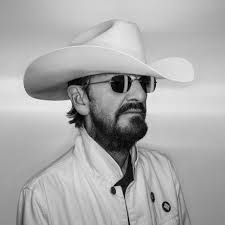 Then on January 27th, 2014, at the Los Angeles Convention Center, Ringo performed "Yellow Submarine" during the 50th Anniversary of The Beatles' first appearance on the Ed Sullivan Show, this televised show being broadcast on CBS on February 9th of that year. Then on January 14th and 15th, 2025, Ringo performed the song at the Ryman Auditorium in Nashville, Tennessee for the CBS TV special "Ringo & Friends At The Ryman," which was broadcast on March 10th, 2025. Ringo sang this song stage front with various musical celebrities, such as Rodney Crowell, Brenda Lee, Jack White, Sheryl Crow, Molly Tuttle, Larkin Poe and the legendary Jim Keltner on drums. This US television special was in celebration of Ringo's current country album "Look Up." Then on January 27th, 2014, at the Los Angeles Convention Center, Ringo performed "Yellow Submarine" during the 50th Anniversary of The Beatles' first appearance on the Ed Sullivan Show, this televised show being broadcast on CBS on February 9th of that year. Then on January 14th and 15th, 2025, Ringo performed the song at the Ryman Auditorium in Nashville, Tennessee for the CBS TV special "Ringo & Friends At The Ryman," which was broadcast on March 10th, 2025. Ringo sang this song stage front with various musical celebrities, such as Rodney Crowell, Brenda Lee, Jack White, Sheryl Crow, Molly Tuttle, Larkin Poe and the legendary Jim Keltner on drums. This US television special was in celebration of Ringo's current country album "Look Up."
Conclusion
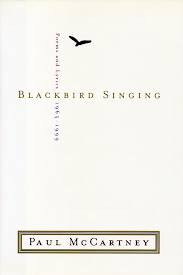 What was originally conceived as a silly half-sleep-inspired idea for a children’s sing-a-long has ultimately become an iconic fixture in The Beatles catalog that they all continued to show affection for. When Ringo agreed to be host of a weekly radio show on the ABC Radio network in 1983, the program was titled “Ringo’s Yellow Submarine.” When Paul McCartney assembled the book “Blackbird Singing” with his favorite poems and lyrics, he included “Yellow Submarine.” Even John Lennon, when doing an impromptu weatherman stint at a local TV station in Philadelphia in 1975, ended his fictional forecast with the phrase: “So the outlook is sunny, but the weather is funny, and you should find a yellow submarine!” What was originally conceived as a silly half-sleep-inspired idea for a children’s sing-a-long has ultimately become an iconic fixture in The Beatles catalog that they all continued to show affection for. When Ringo agreed to be host of a weekly radio show on the ABC Radio network in 1983, the program was titled “Ringo’s Yellow Submarine.” When Paul McCartney assembled the book “Blackbird Singing” with his favorite poems and lyrics, he included “Yellow Submarine.” Even John Lennon, when doing an impromptu weatherman stint at a local TV station in Philadelphia in 1975, ended his fictional forecast with the phrase: “So the outlook is sunny, but the weather is funny, and you should find a yellow submarine!”
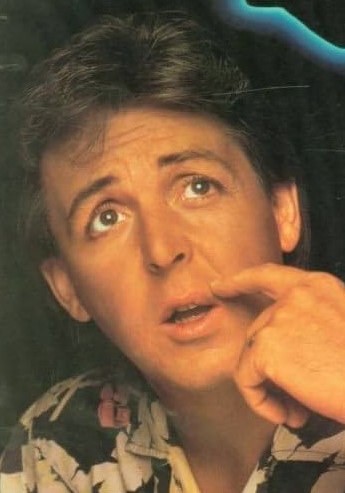 So while The Beatles never thought to perform this song in concert or ever touch it again as a group, they knew that this irresistible pastiche of Goons-style comedic recording touched a nerve with fans around the world, especially with children. “Kids get it straight away,” Paul explains. “I just loved the idea of kids singing it. With ‘Yellow Submarine,’ the whole idea was ‘if someday I came across some kids singing it, that will be it.’” And Paul got his wish. Mission accomplished! So while The Beatles never thought to perform this song in concert or ever touch it again as a group, they knew that this irresistible pastiche of Goons-style comedic recording touched a nerve with fans around the world, especially with children. “Kids get it straight away,” Paul explains. “I just loved the idea of kids singing it. With ‘Yellow Submarine,’ the whole idea was ‘if someday I came across some kids singing it, that will be it.’” And Paul got his wish. Mission accomplished!
Song Summary
“Yellow Submarine”
Written by: John Lennon / Paul McCartney
-
Song Written: March - May 26th, 1966
-
Song Recorded: May 26, June 1, 1966
-
First US Release Date: August 8, 1966
-
US Single Release: Capitol #5715
-
Highest Chart Position: #2
-
First US Album Release: Capitol #ST-2576 “Revolver”
-
British Album Release: Parlophone #PCS 7009 “Revolver”
-
Length: 2:40
-
Key: G major
-
Producer: George Martin
-
Engineers: Geoff Emerick, Phil McDonald
Instrumentation (most likely):
-
Ringo Starr – Lead Vocals, Drums (1964 Ludwig Super Classic Black Oyster Pearl), drumstick tapping, sound effects, crowd noise, backing vocals
-
Paul McCartney - Bass Guitar (1964 Rickenbacker 4001S), Harmony Vocals, nautical voices, sound effects
-
John Lennon - Rhythm Guitar (1964 Gibson J-160E) Harmony Vocals, nautical voices, blowing bubbles, sound effects
-
George Harrison – Harmony Vocals, tambourine, sound effects
-
Mal Evans - Bass drum, chains in bucket of water, shuffling sand and coal, crowd noise, backing vocals
-
John Skinner - Chains in a bucket of water, crowd noise, backing vocals
-
Terry Condon - Chains in a bucket of water, crowd noise, backing vocals
-
Brian Jones - Tapping drinking glasses, ocarina, crowd noise, backing vocals
-
Mick Jagger - Sound effects, crowd noise, backing vocals
-
Marianne Faithfull - Sound effects, crowd noise, backing vocals
-
Pattie (Boyd) Harrison - Sound effects, crowd noise, backing vocals
-
Alf Bicknell - Backing vocals, Rattling chains, backing vocals
-
Neil Aspinall - Backing vocals, sound effects
-
George Martin - Sound effect, backing vocals
-
Geoff Emerick - Backing vocals, sound effects
Written and compiled by Dave Rybaczewski
|
IF YOU WOULD LIKE TO MAKE A DONATION TO KEEP THIS WEBSITE UP AND RUNNING, PLEASE CLICK BELOW!
Sign Up Below for our MONTHLY BEATLES TRIVIA QUIZ!
|